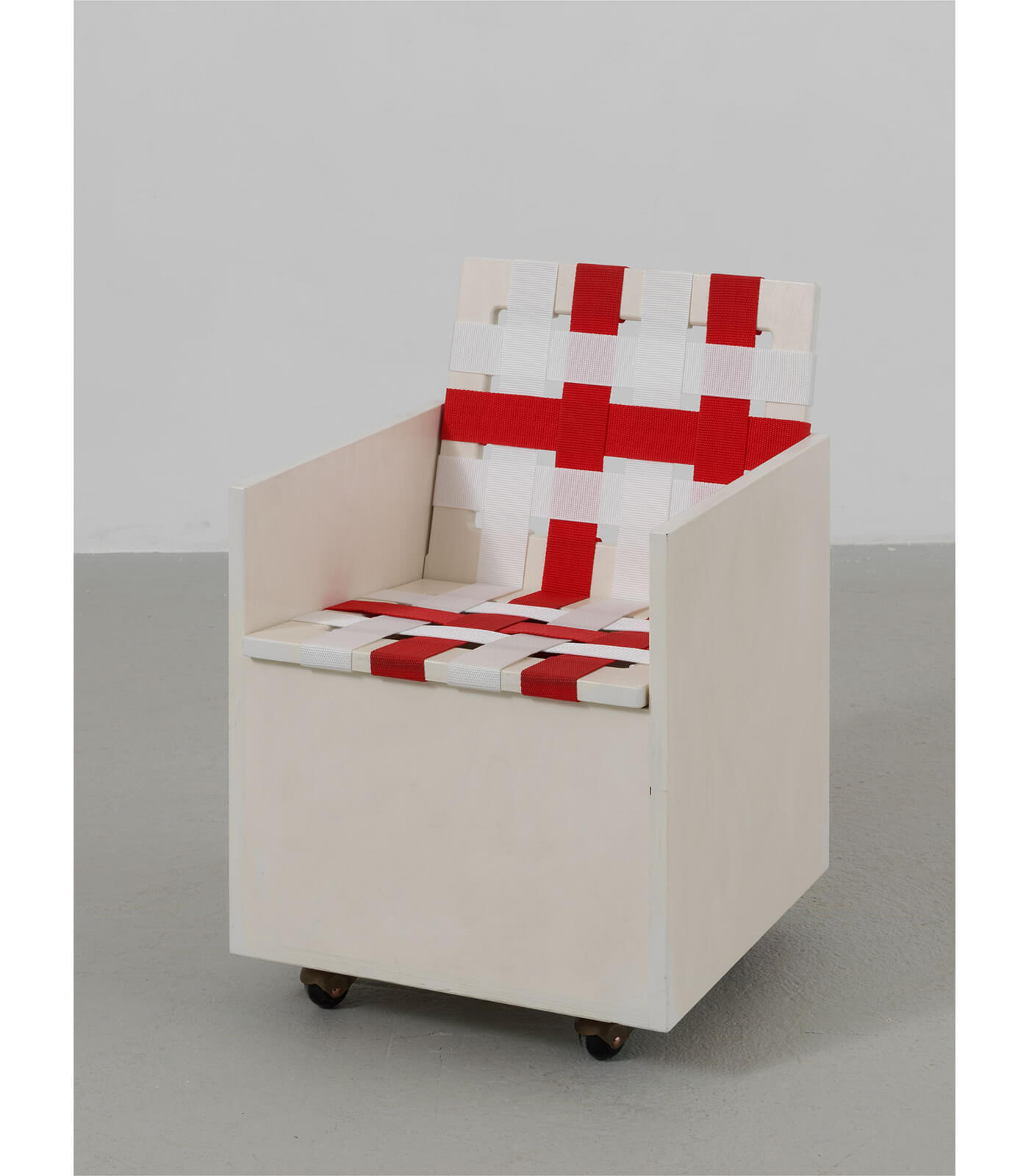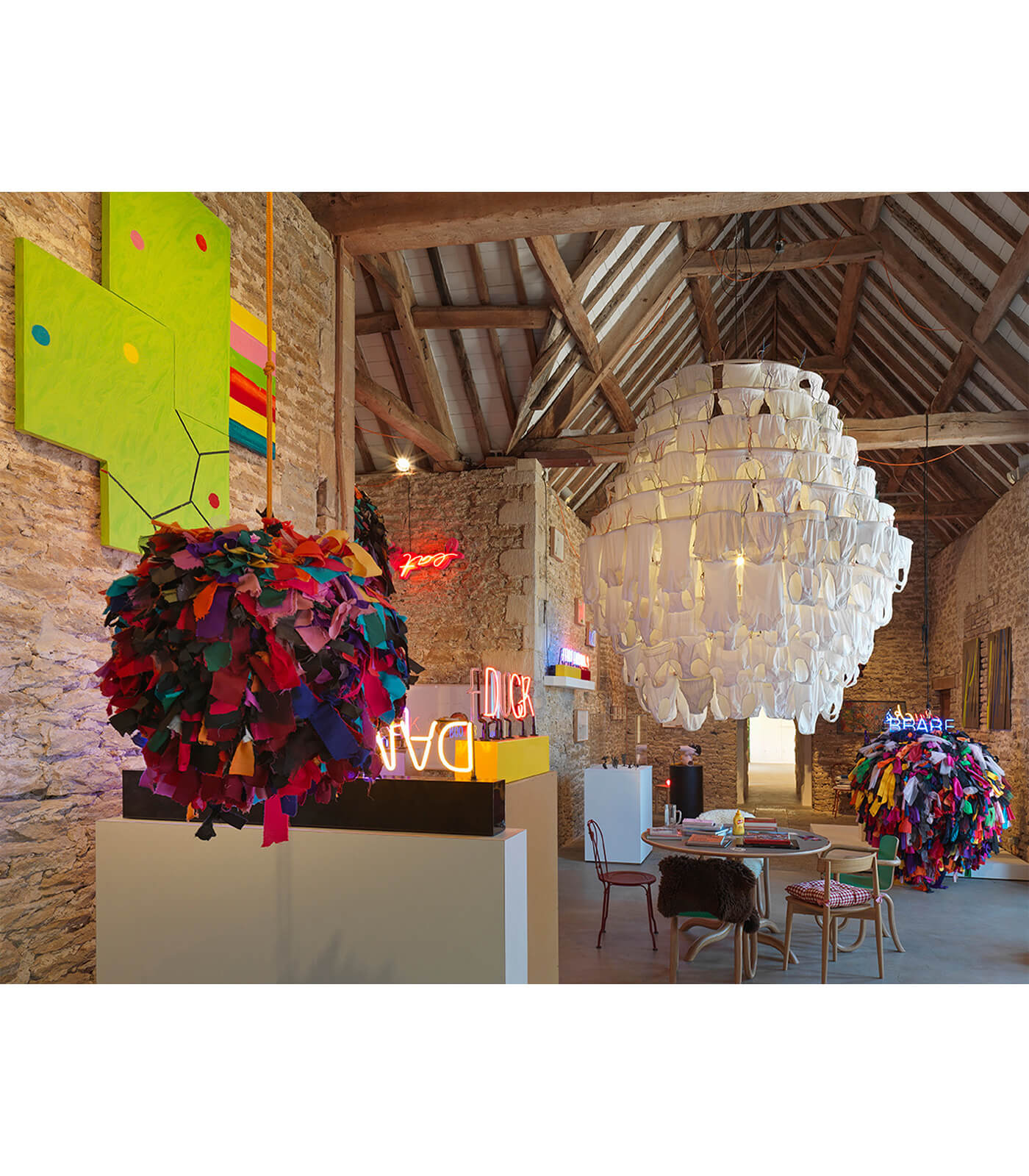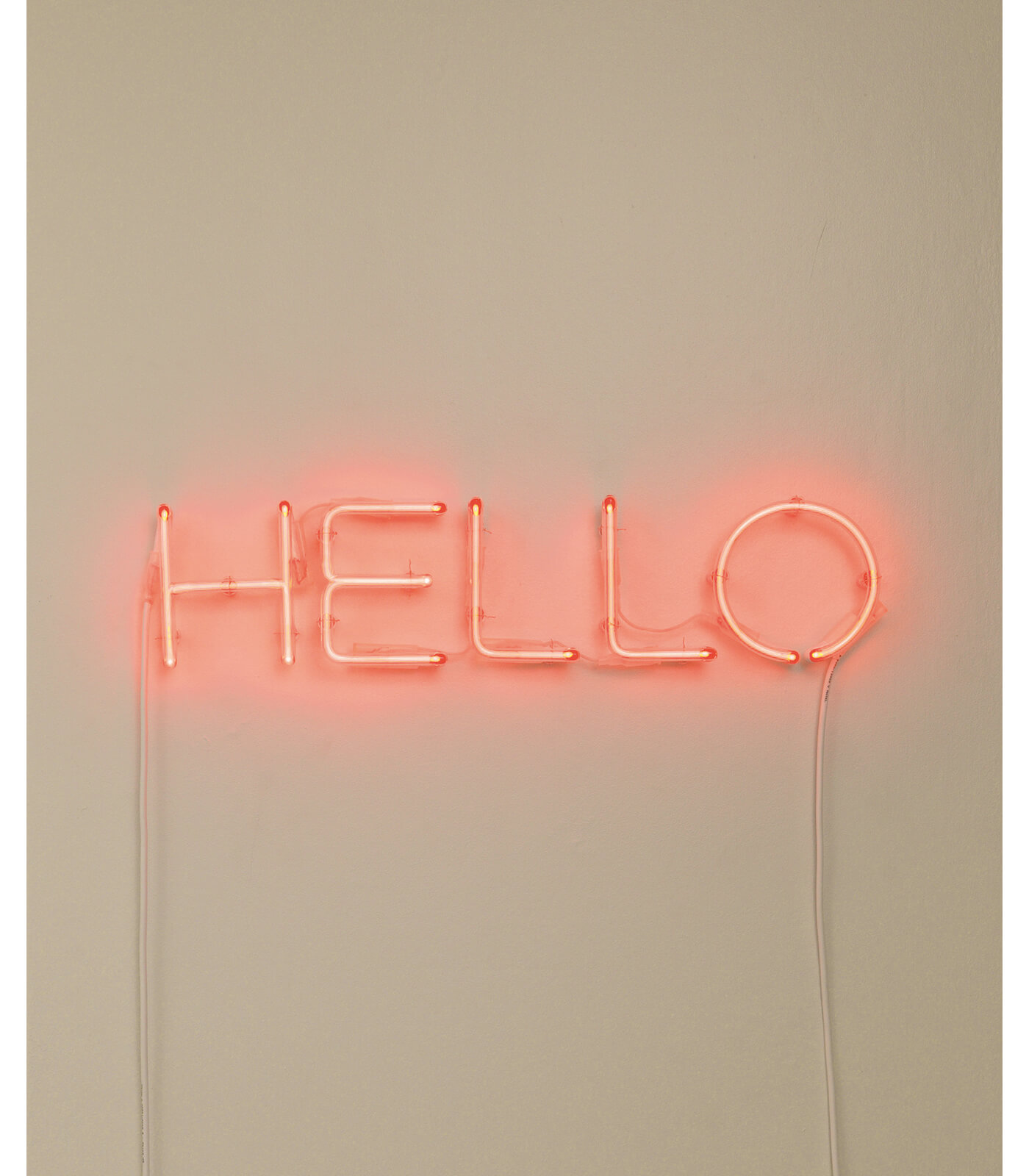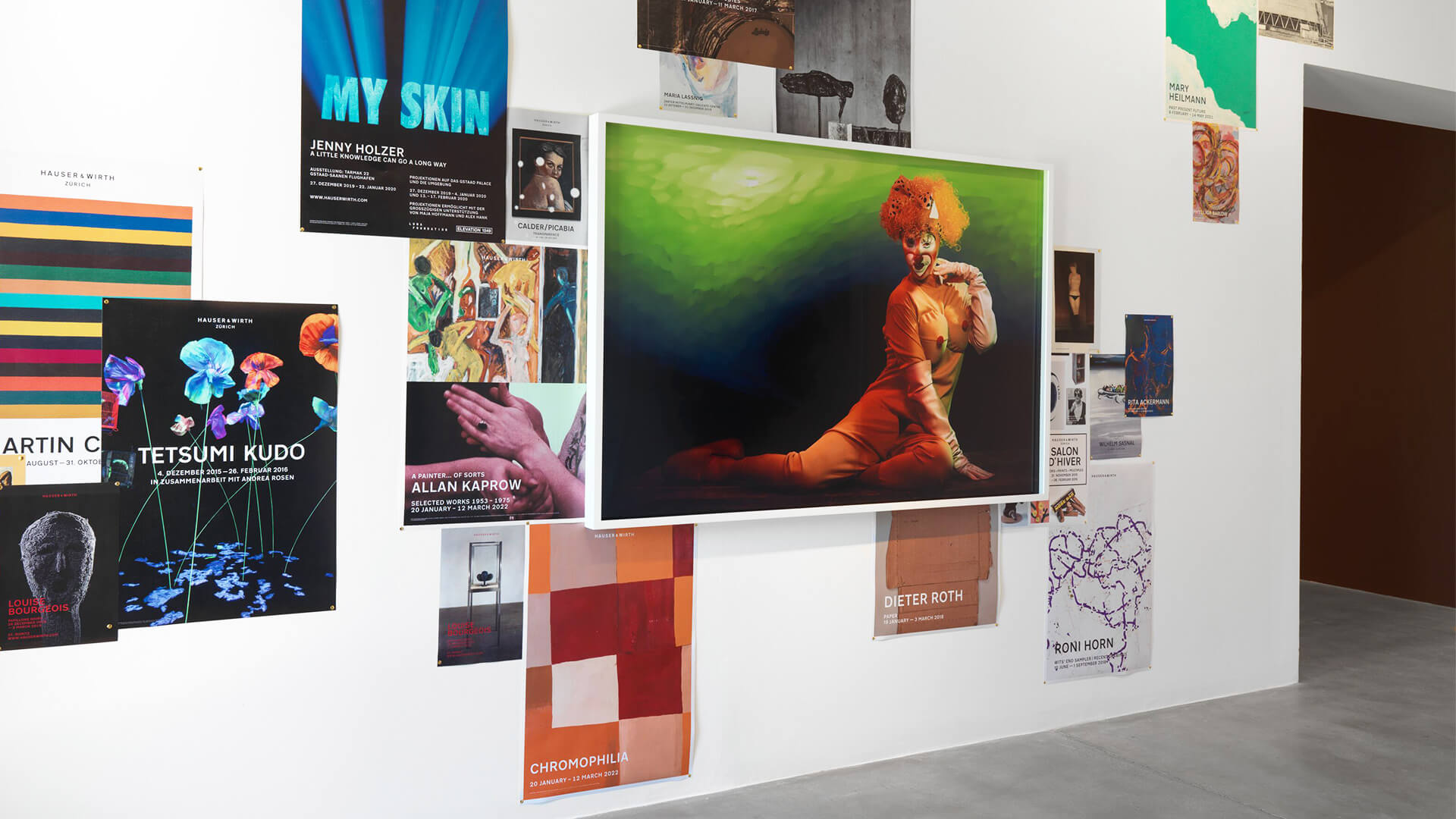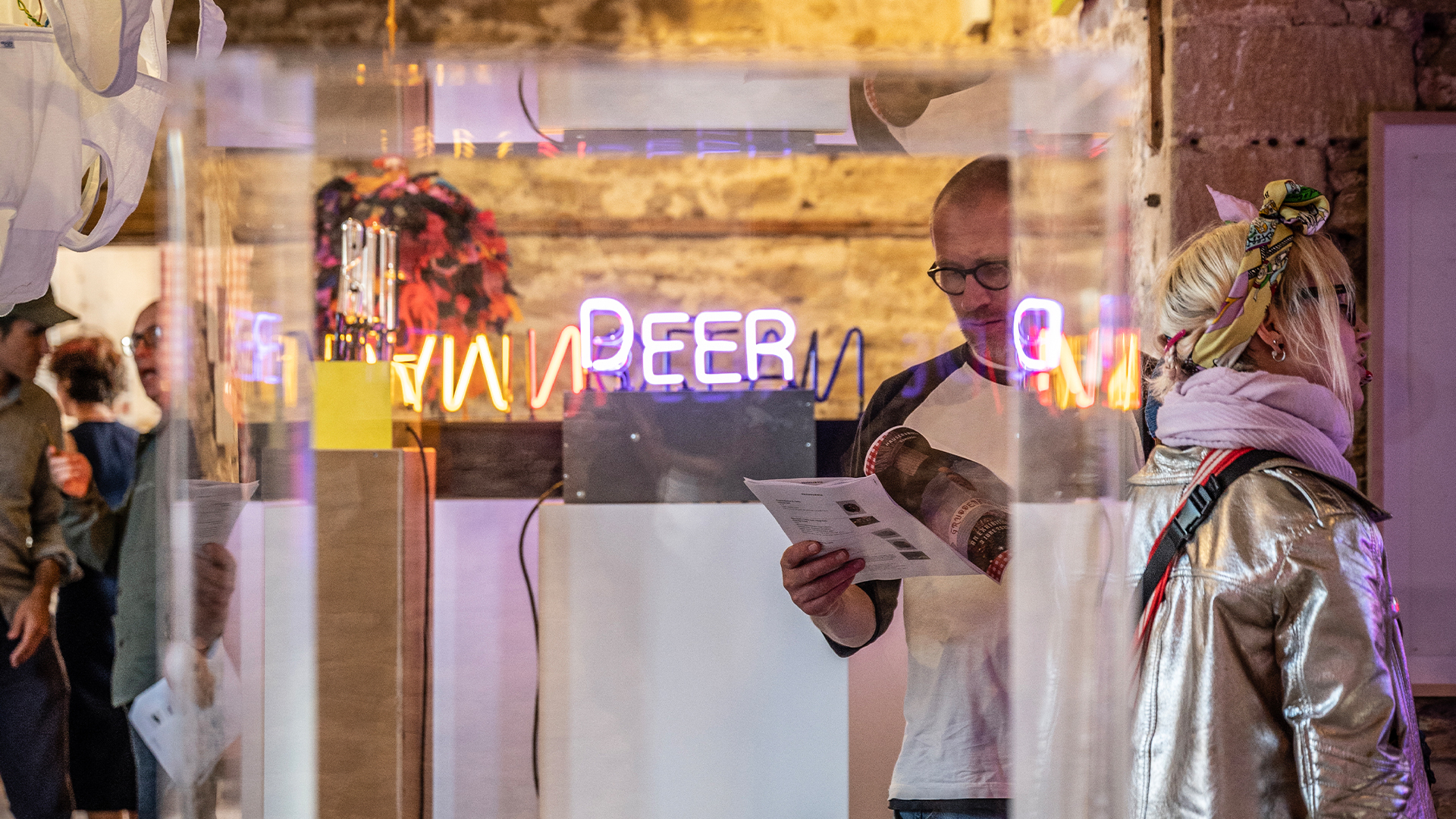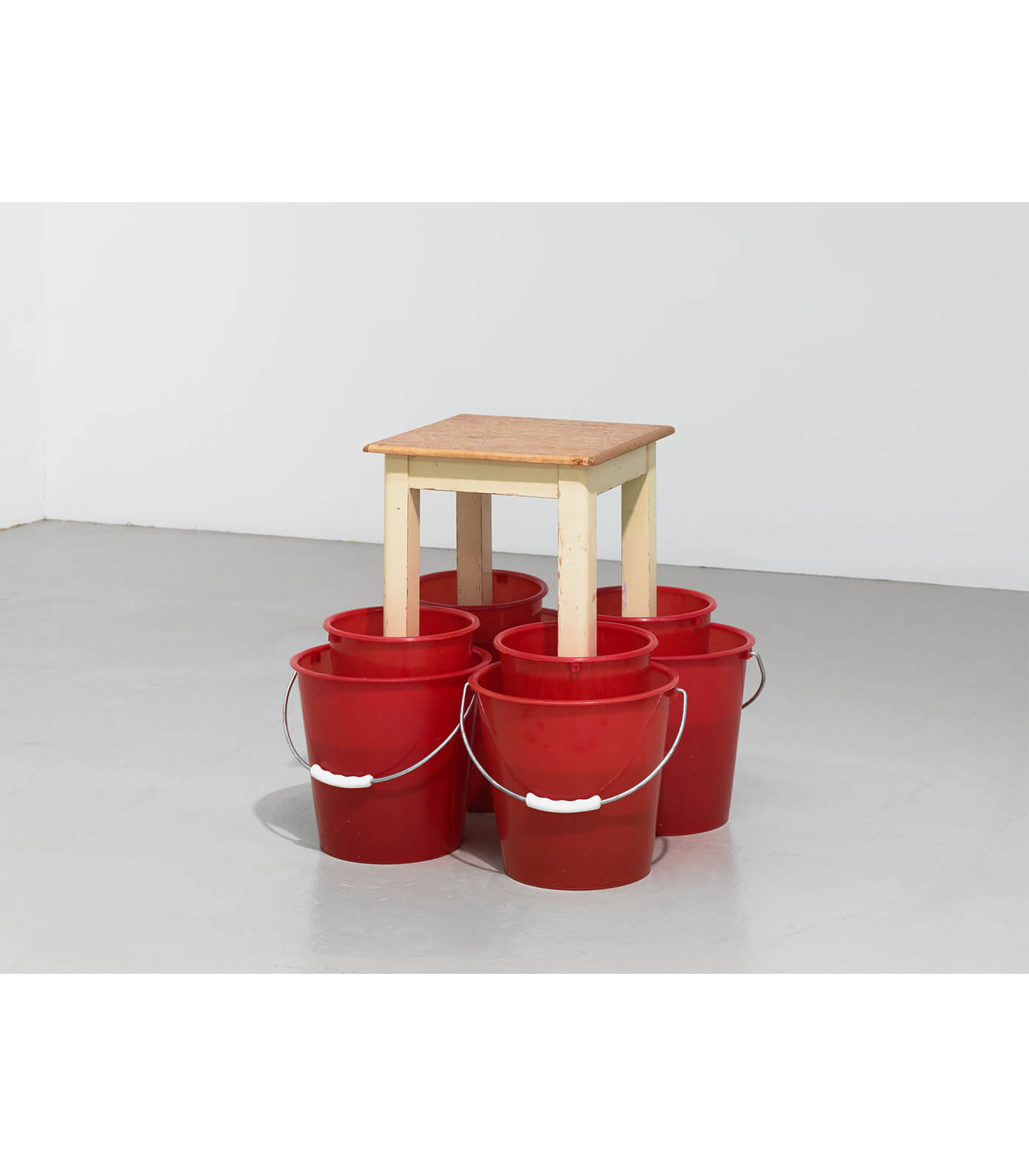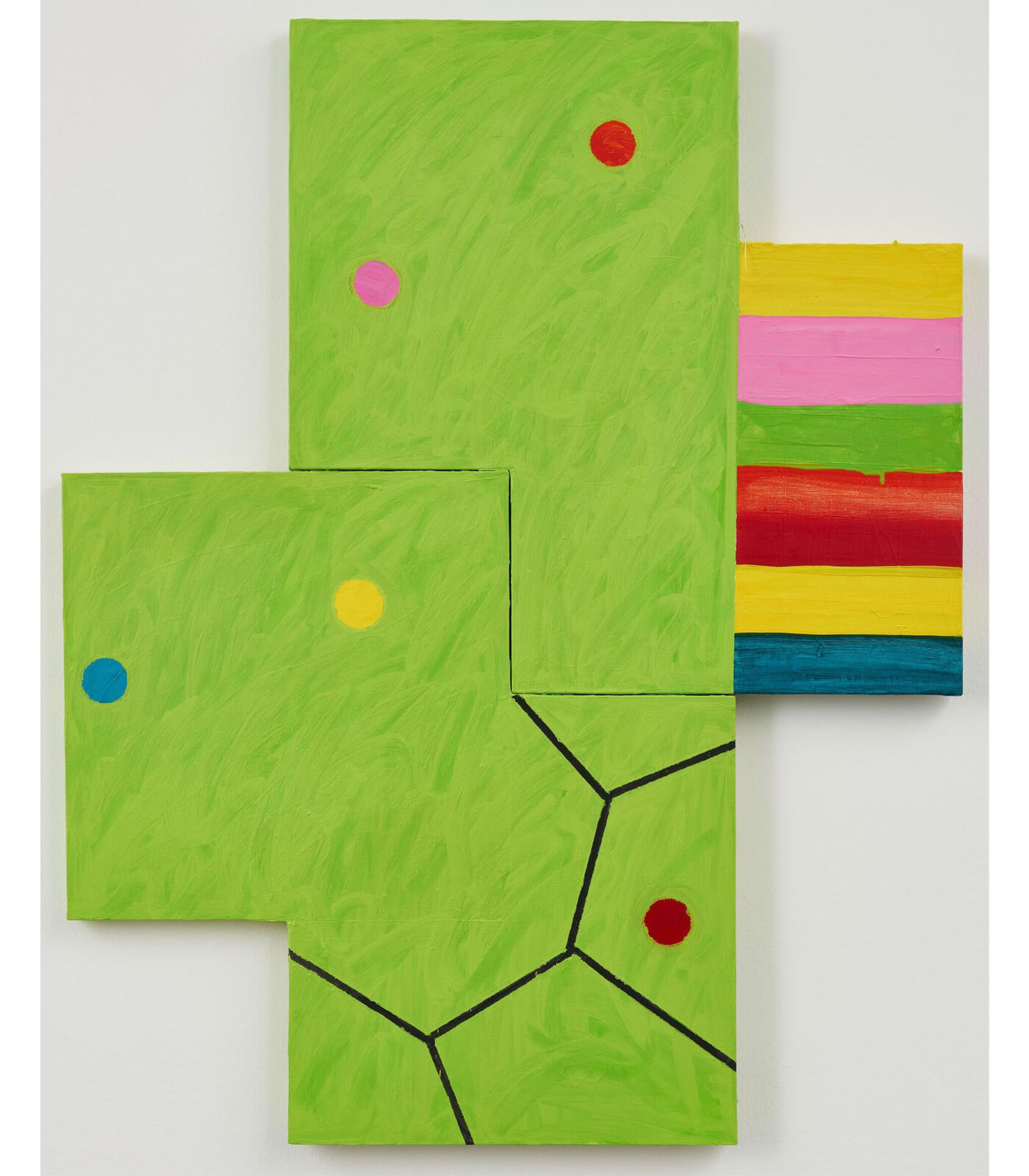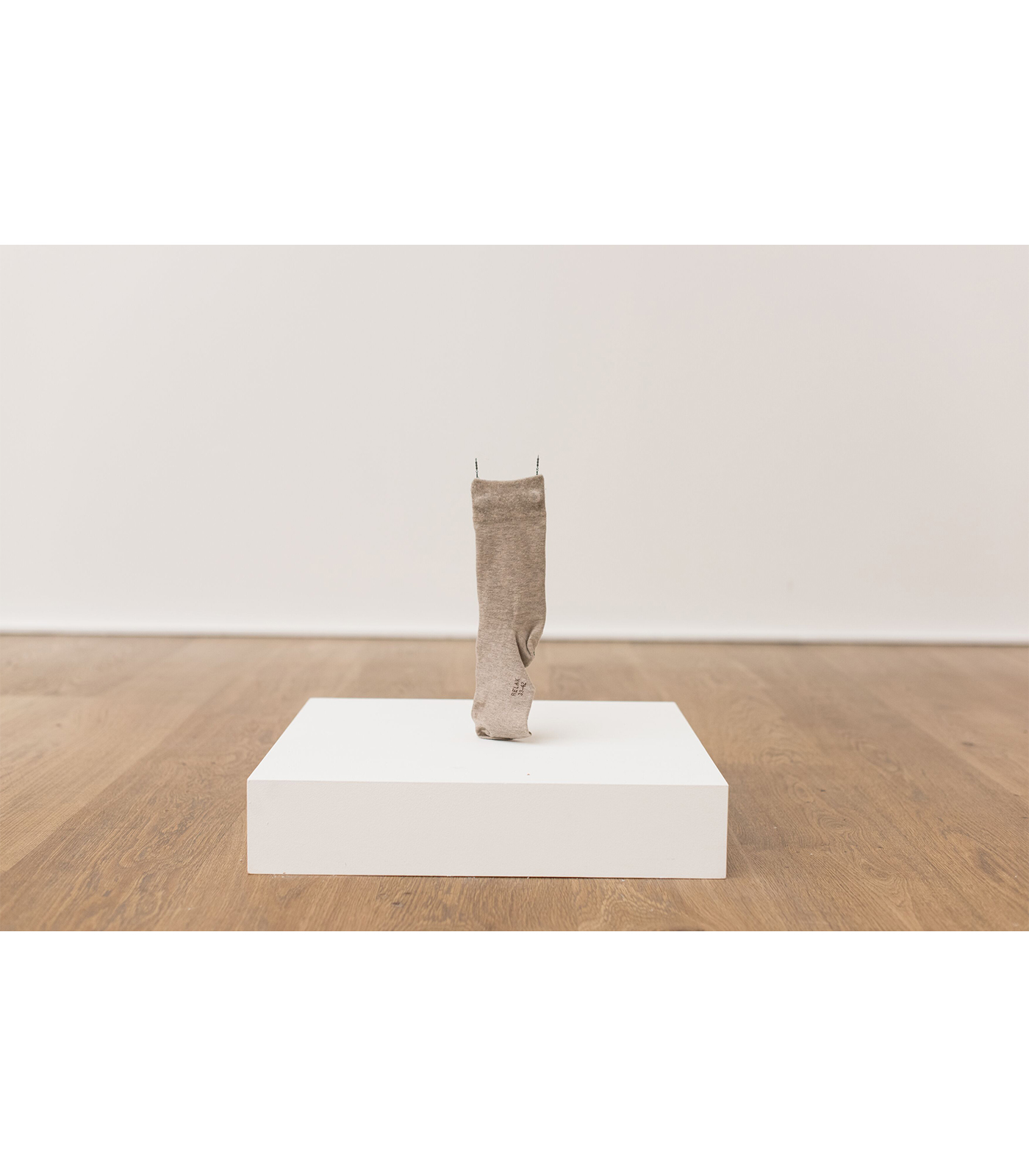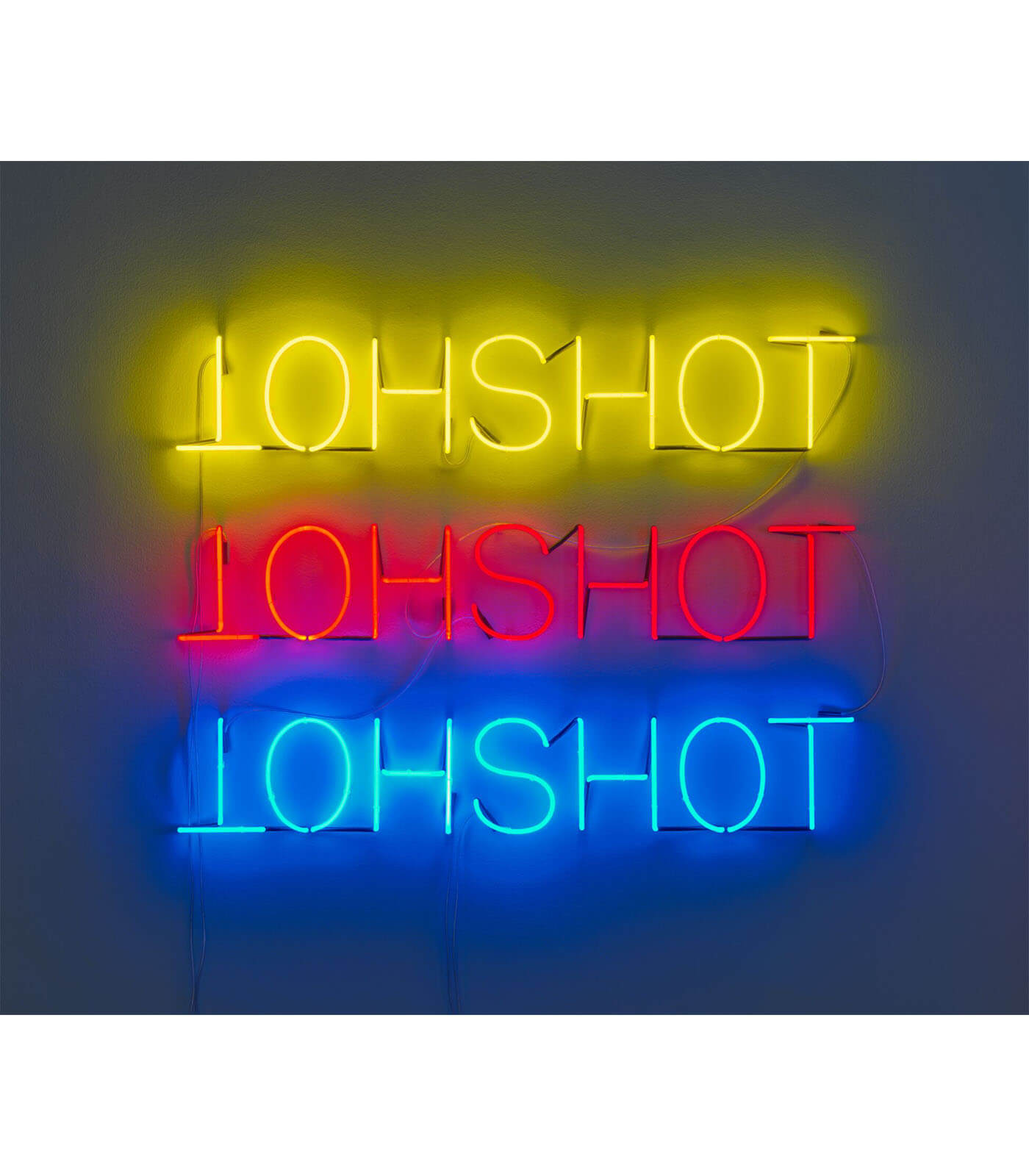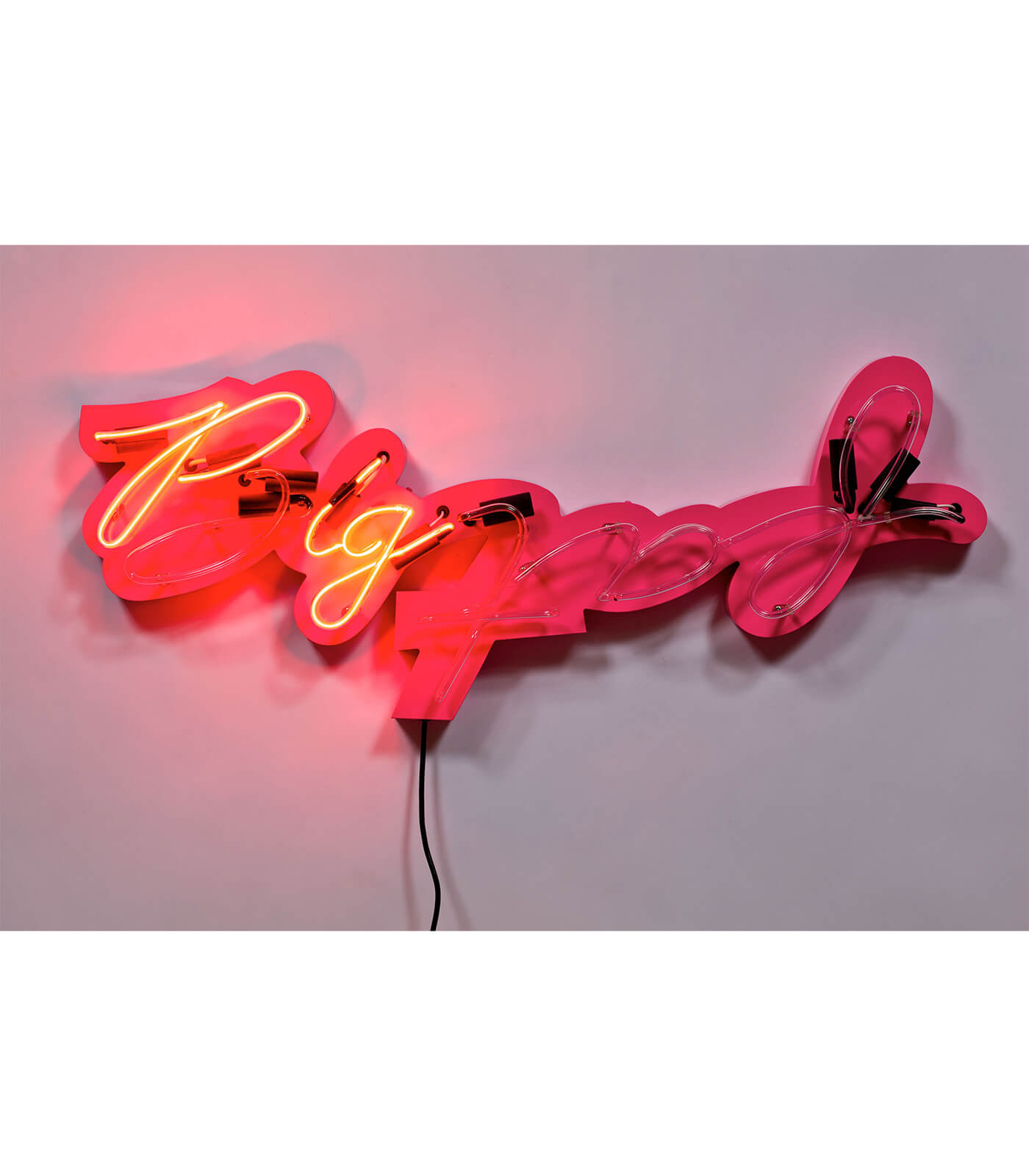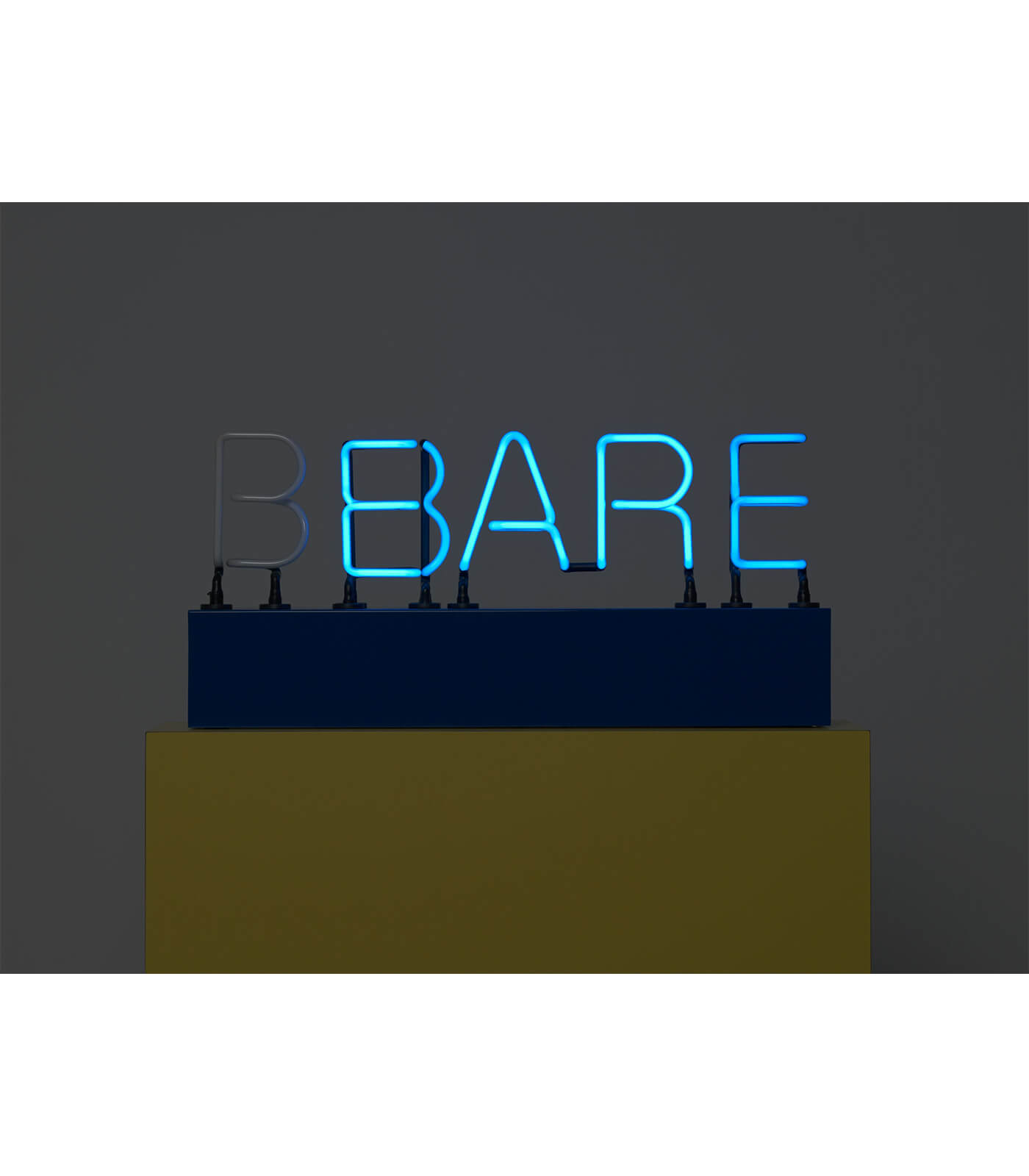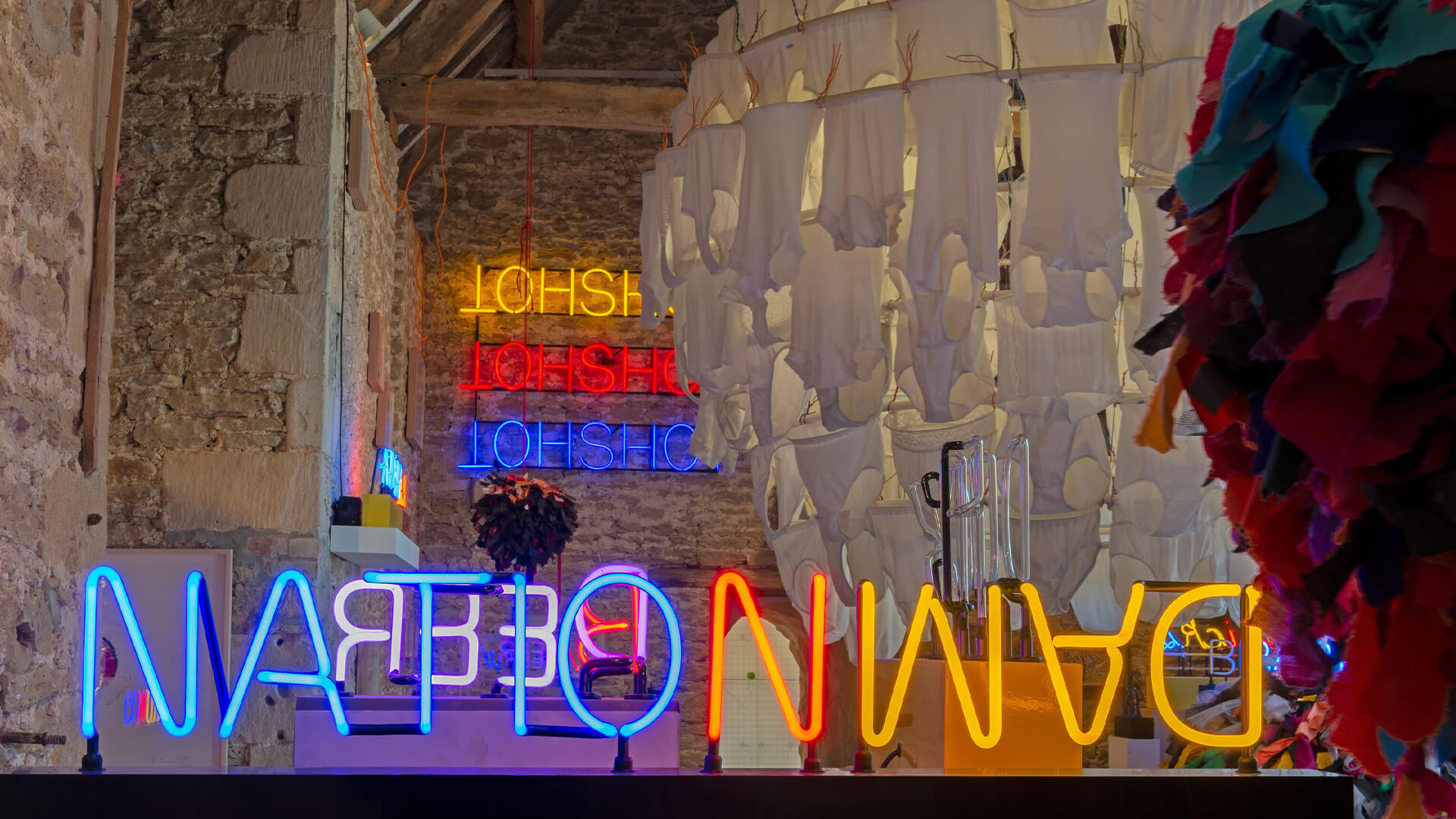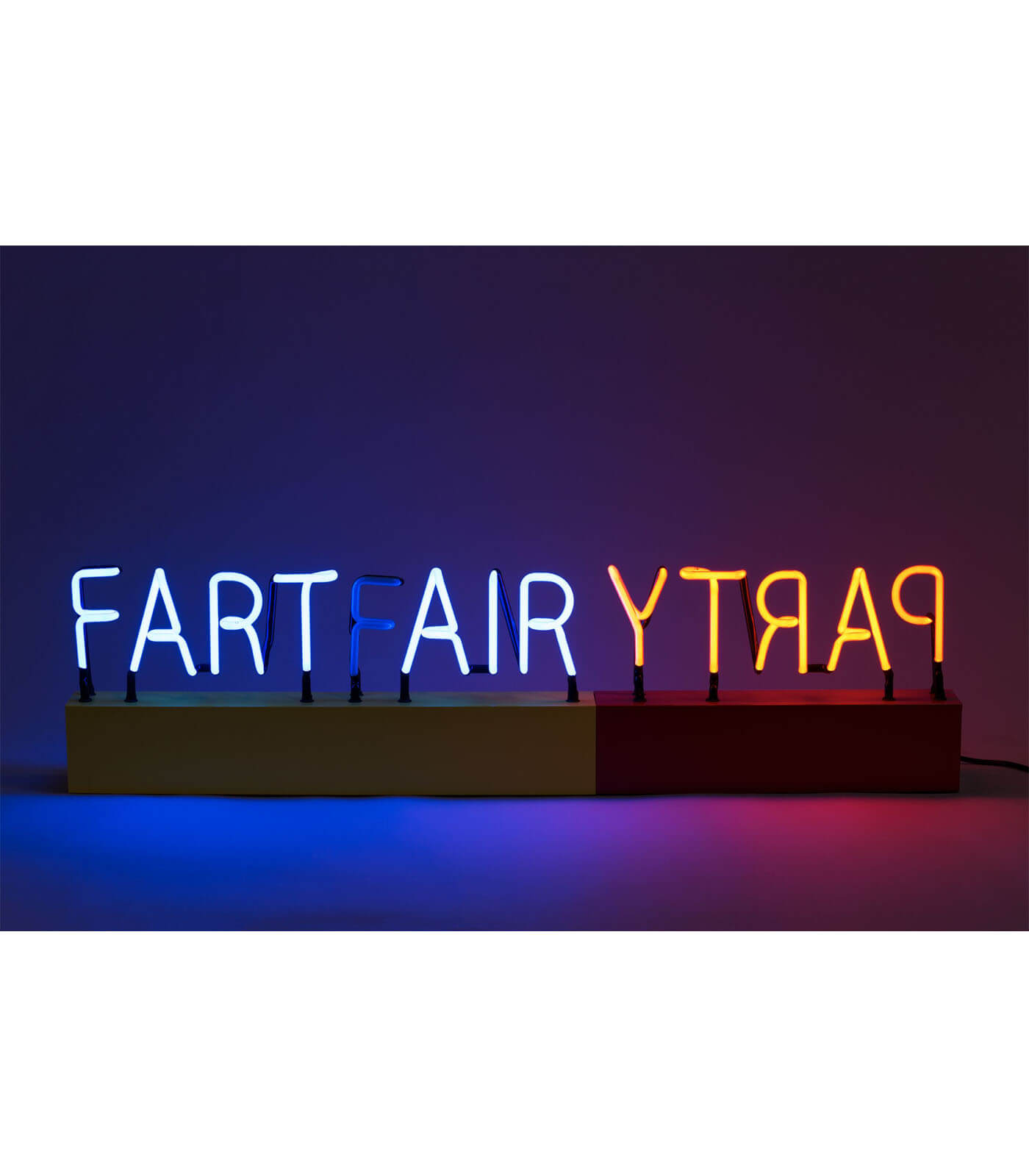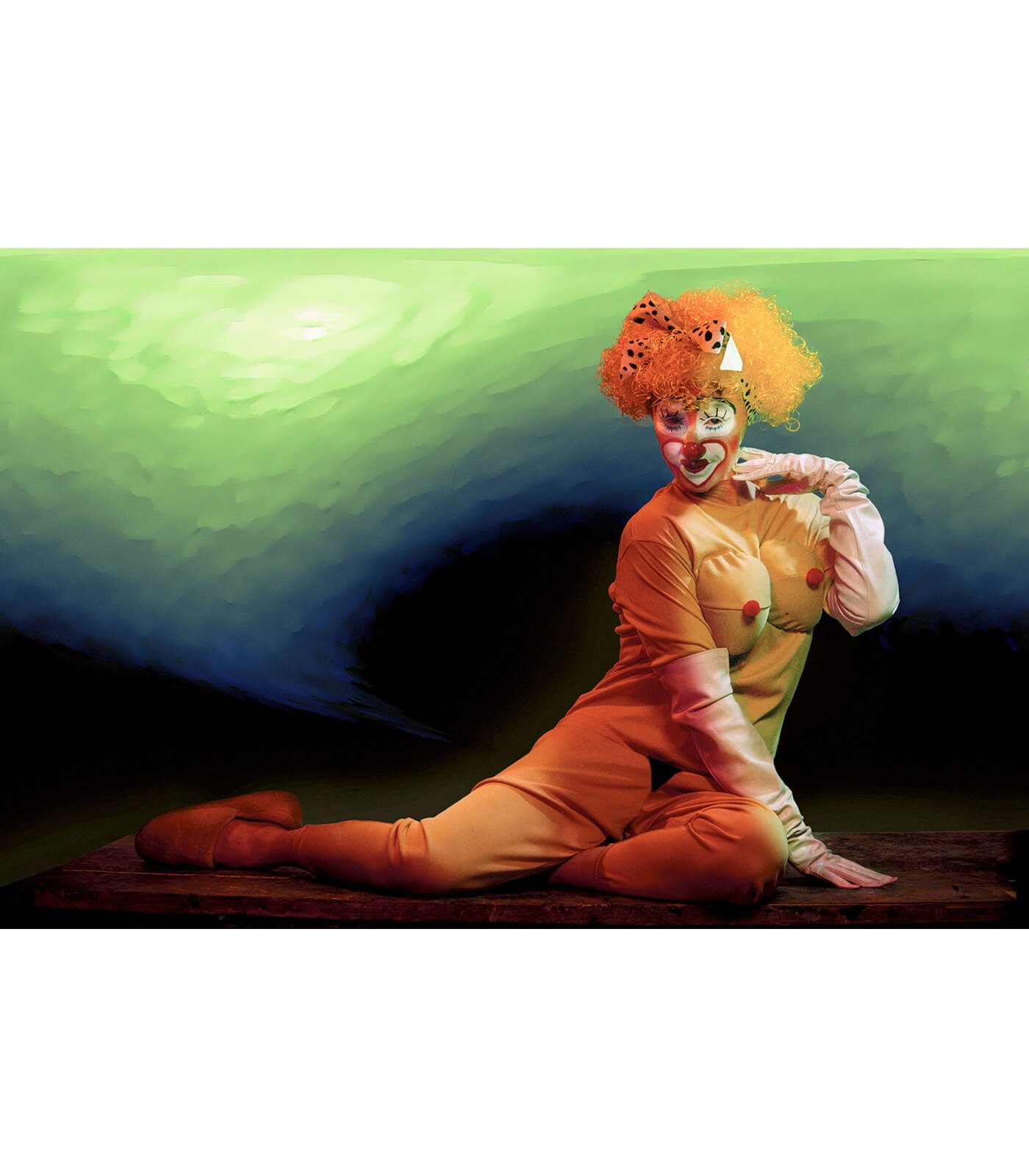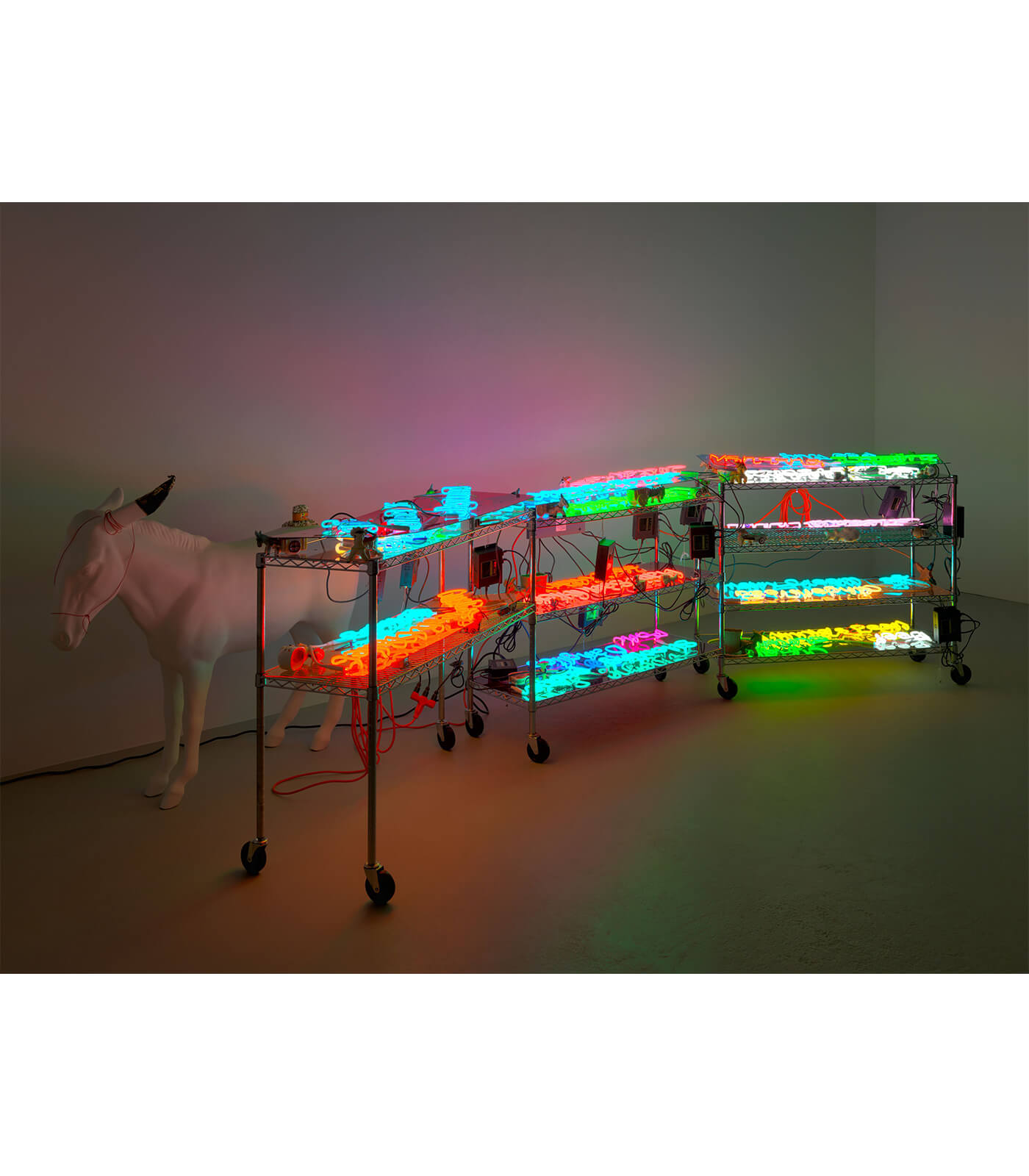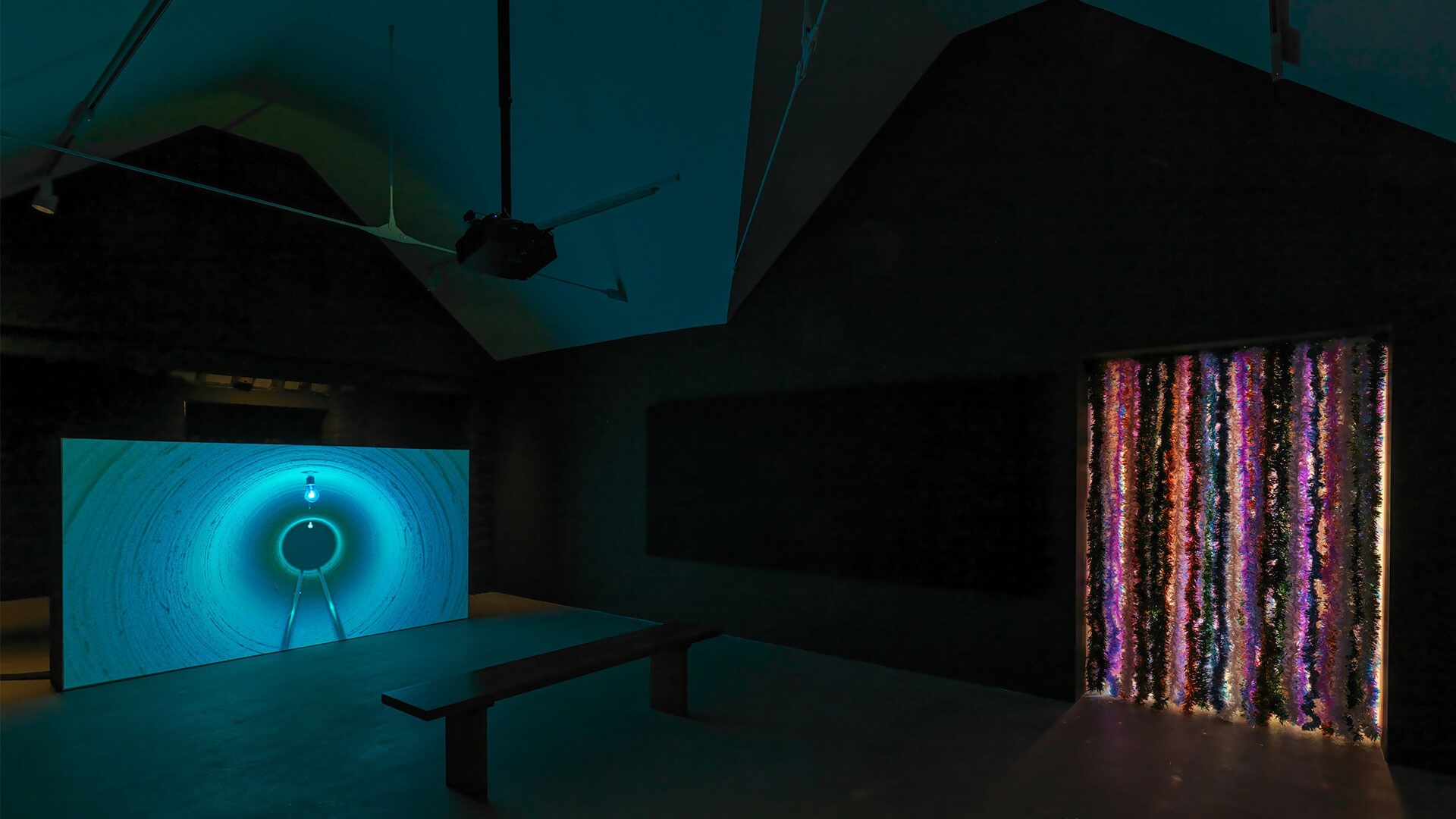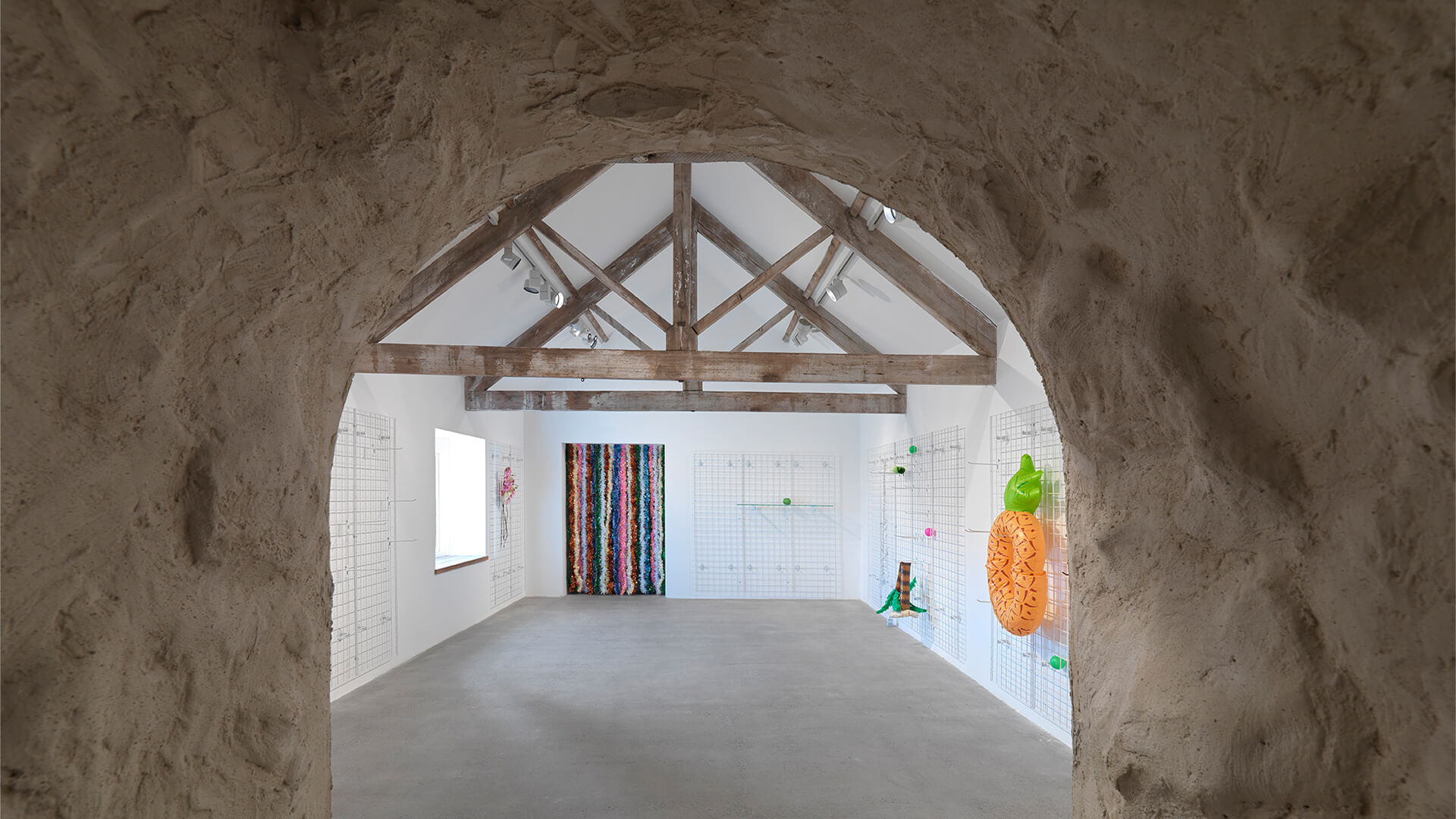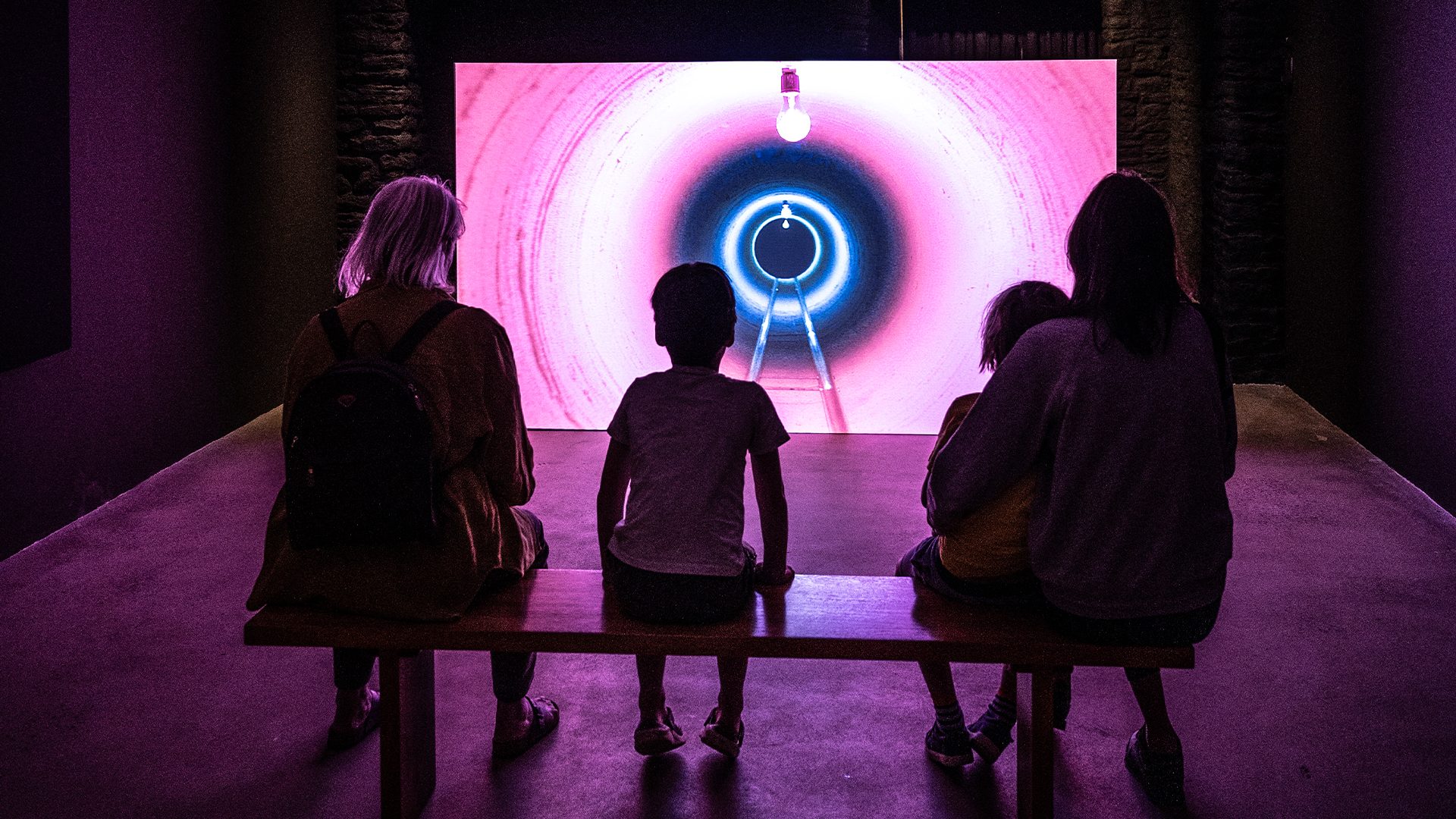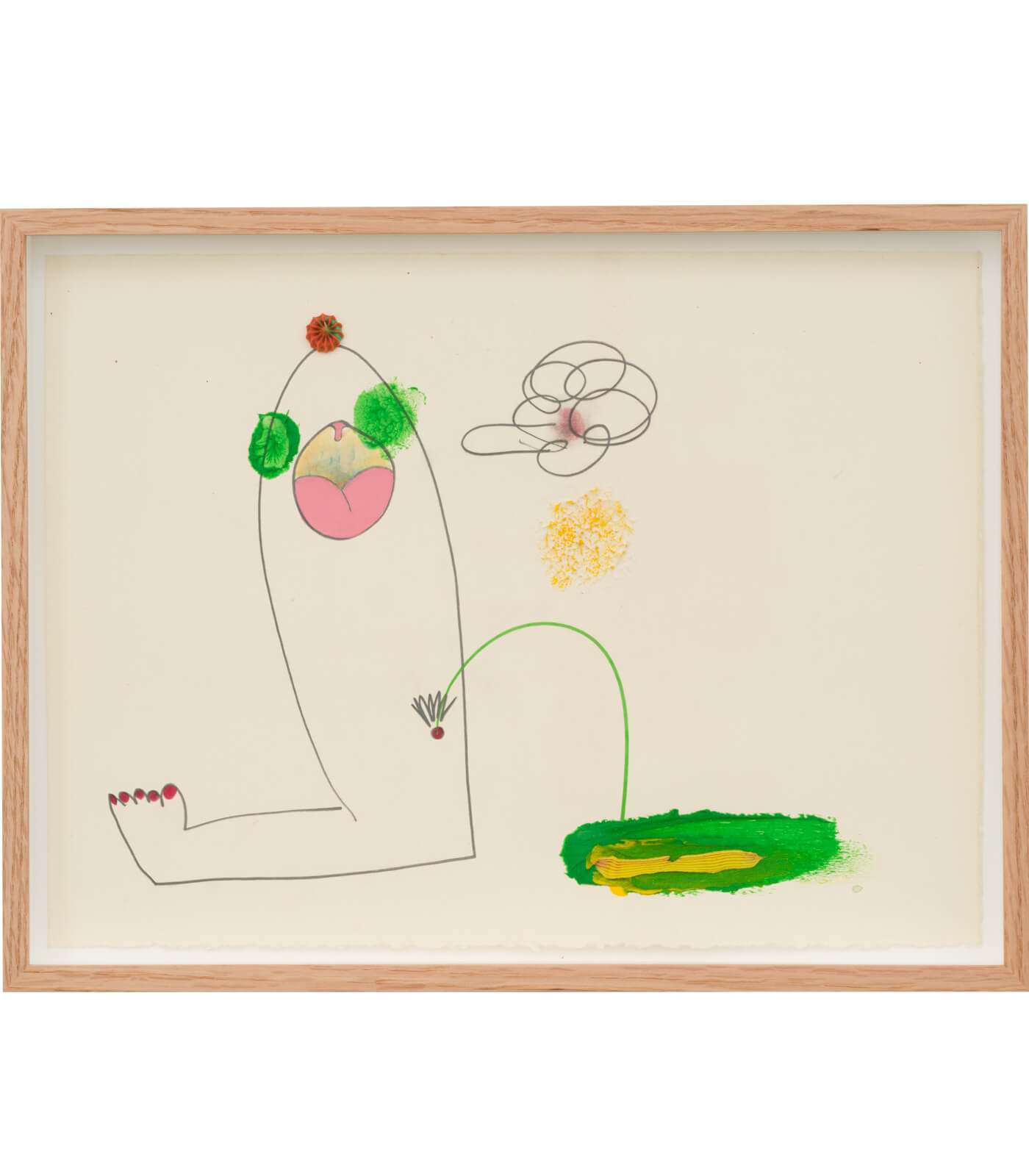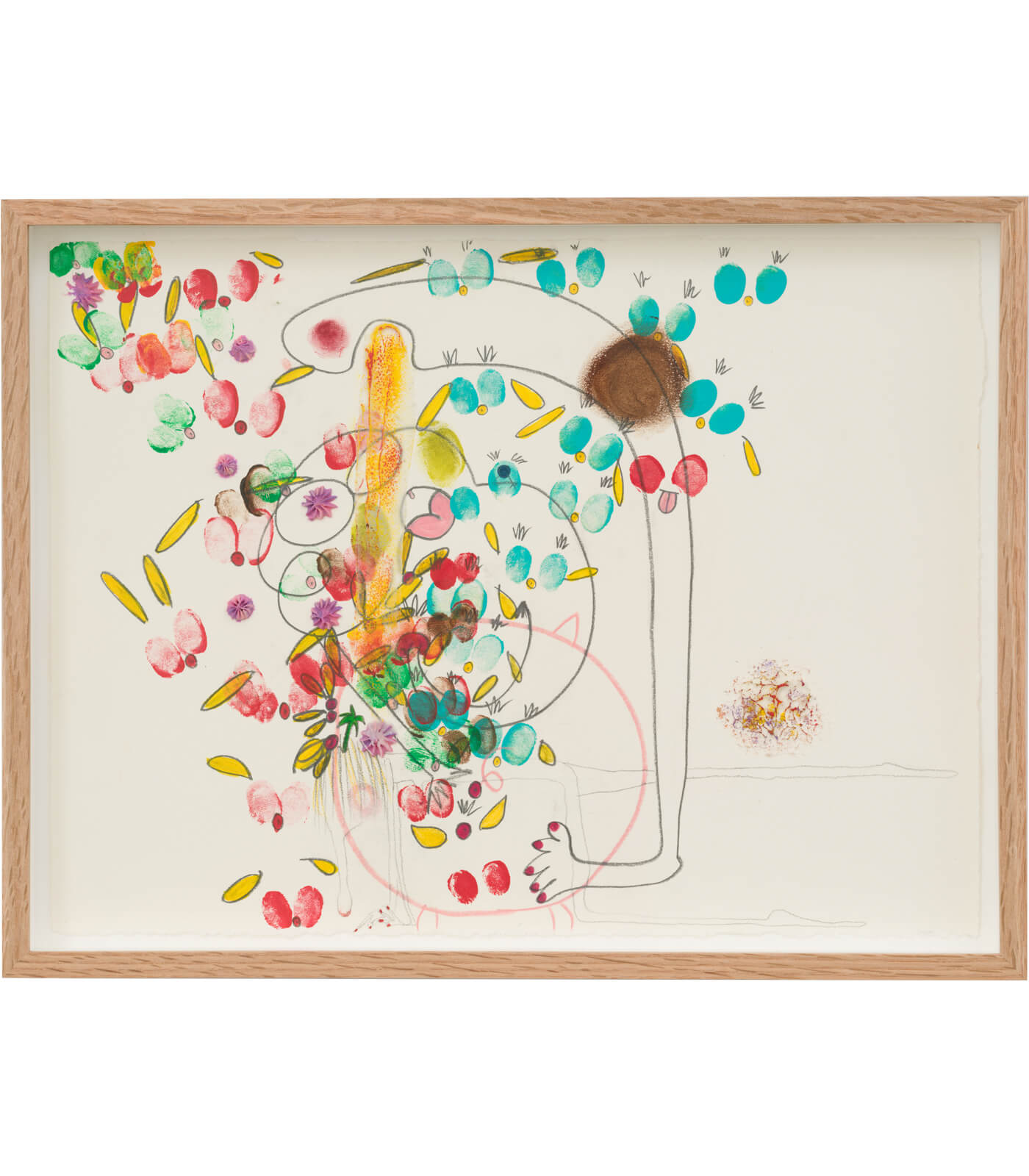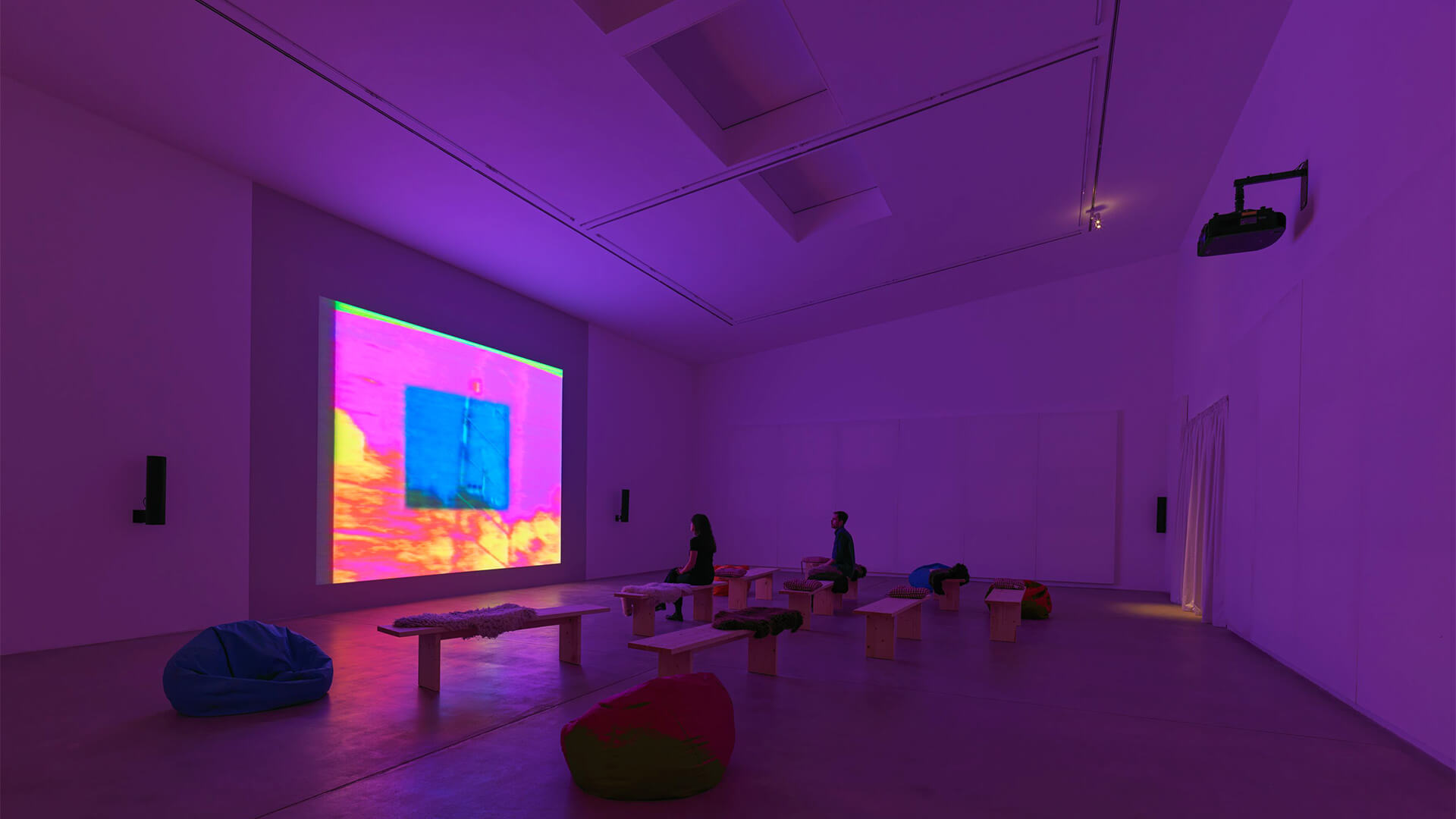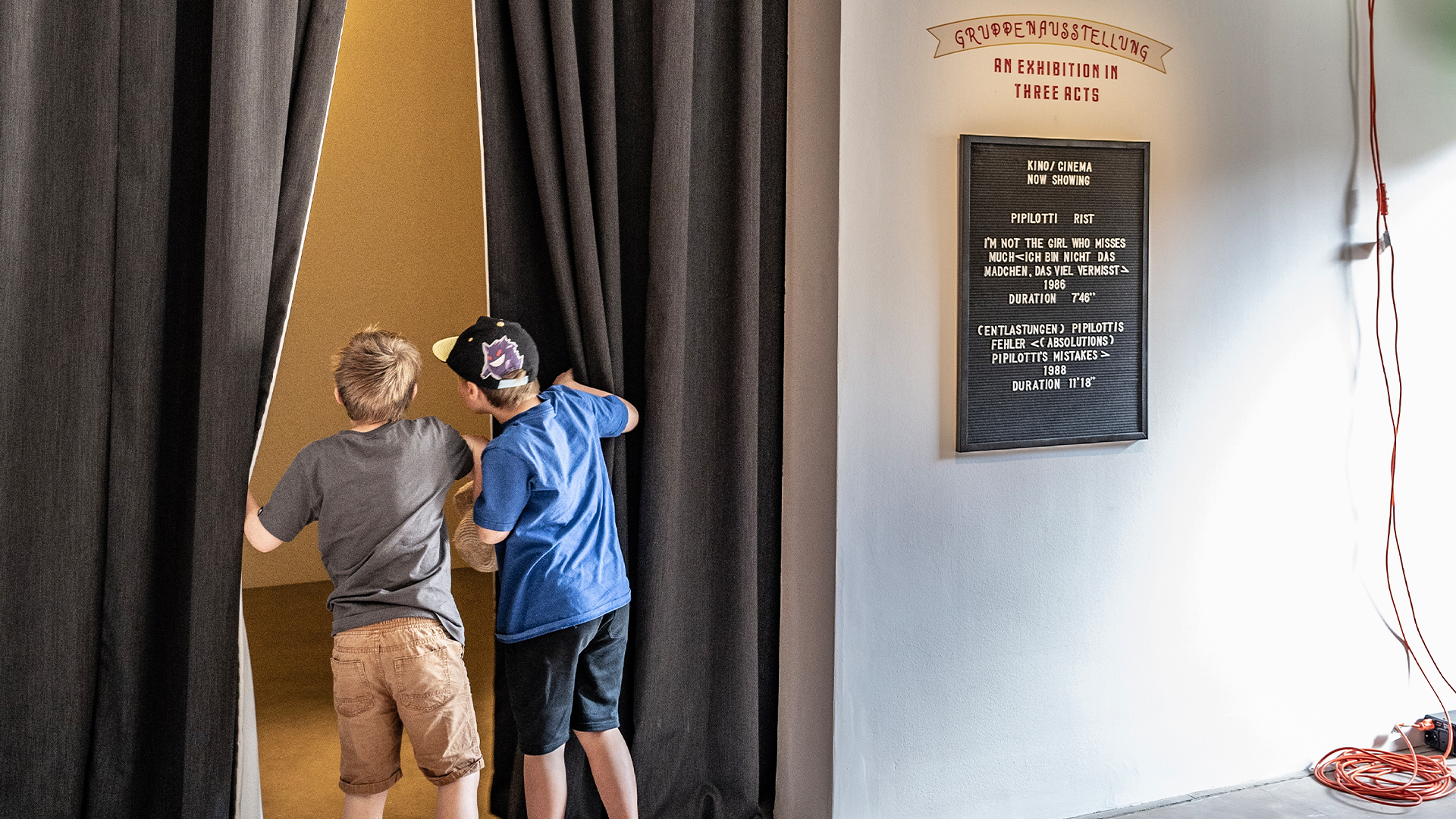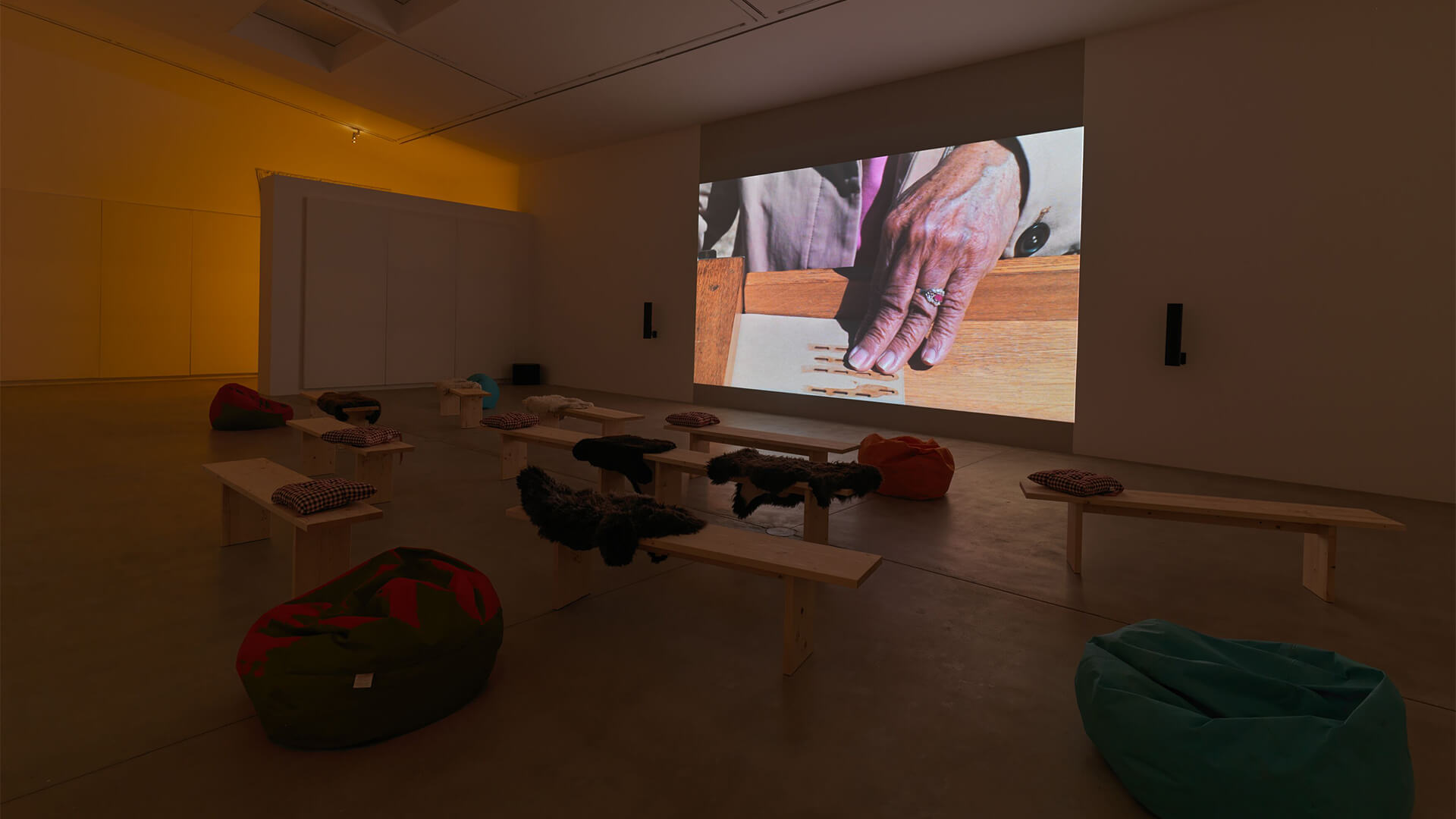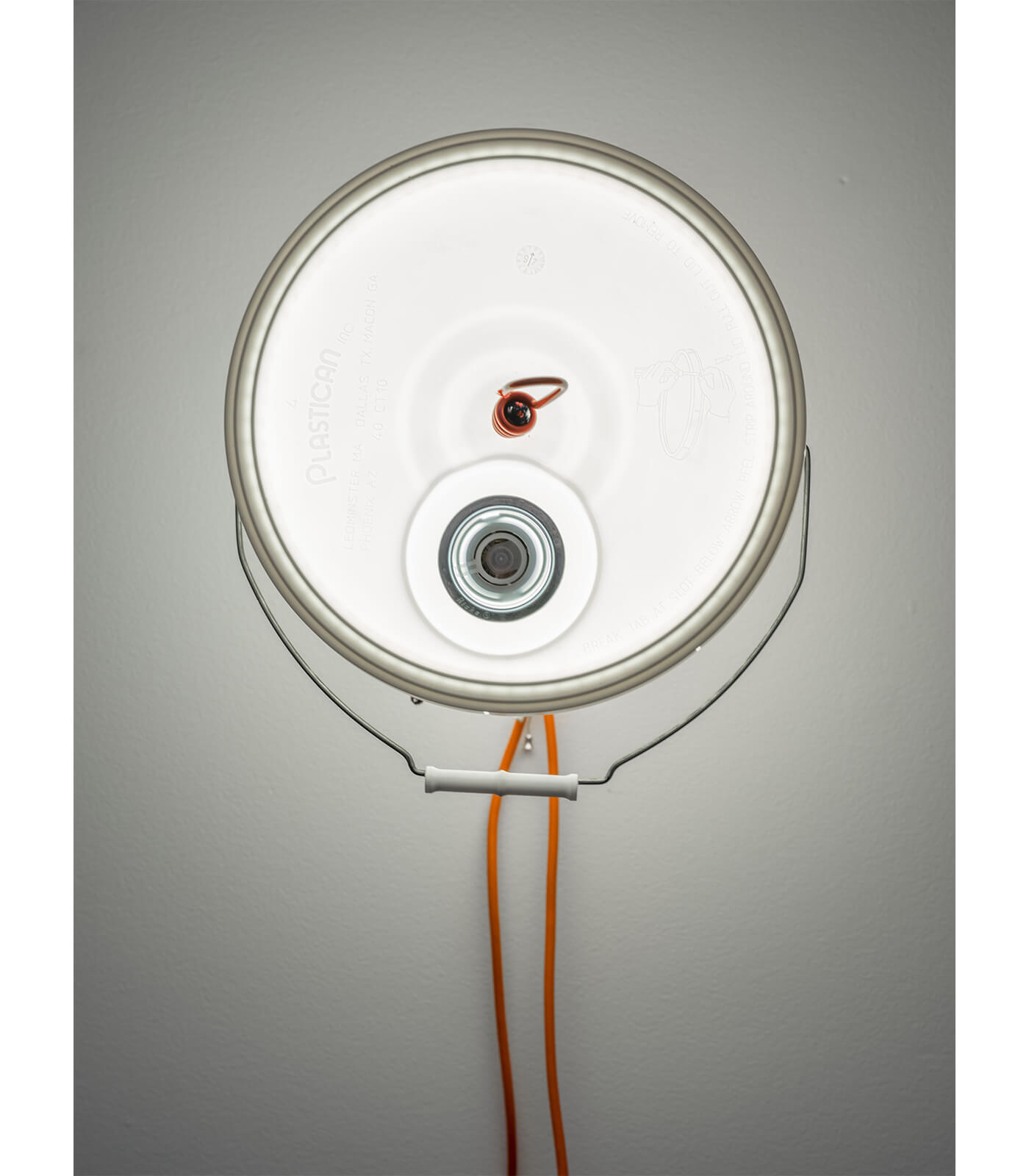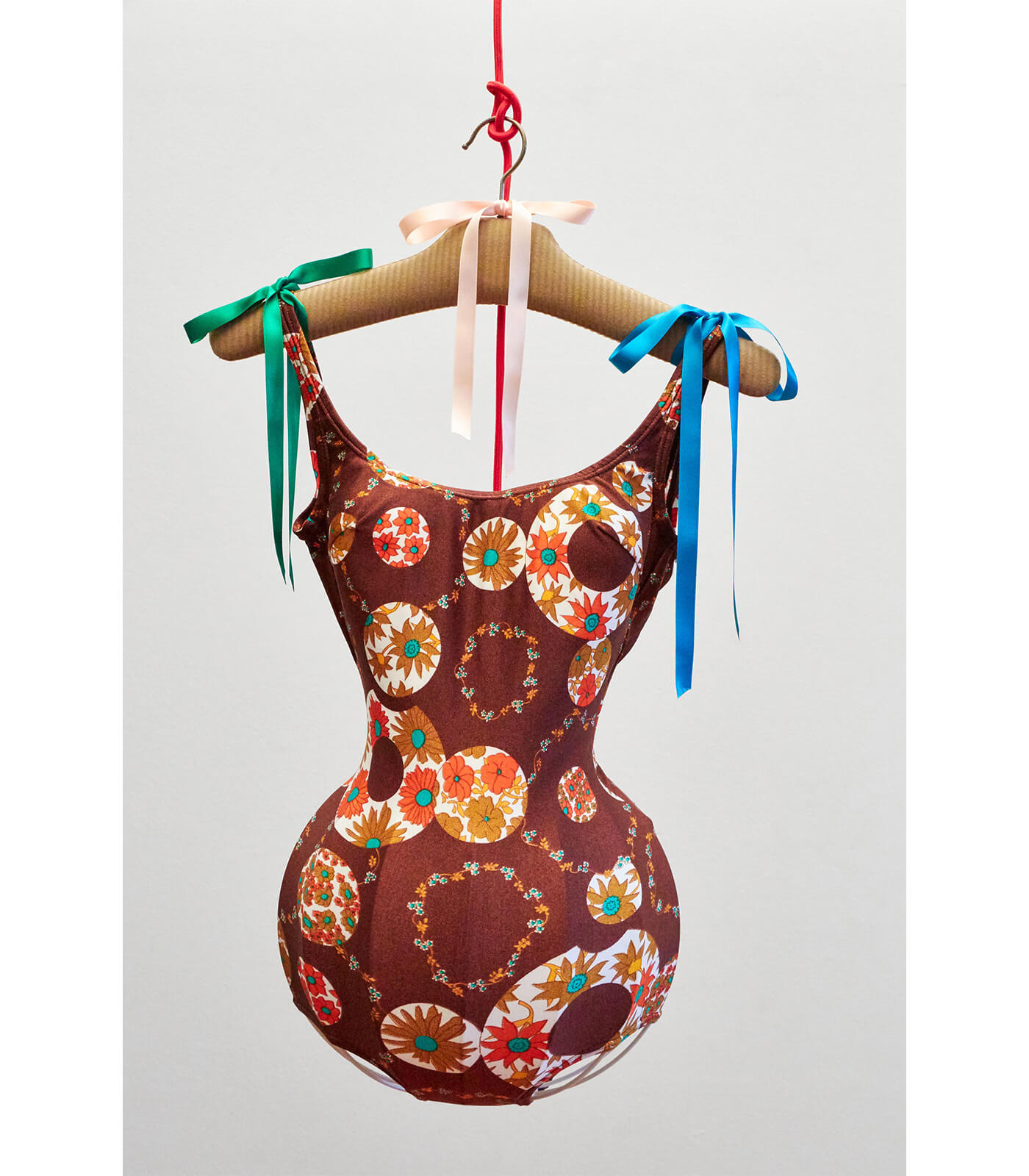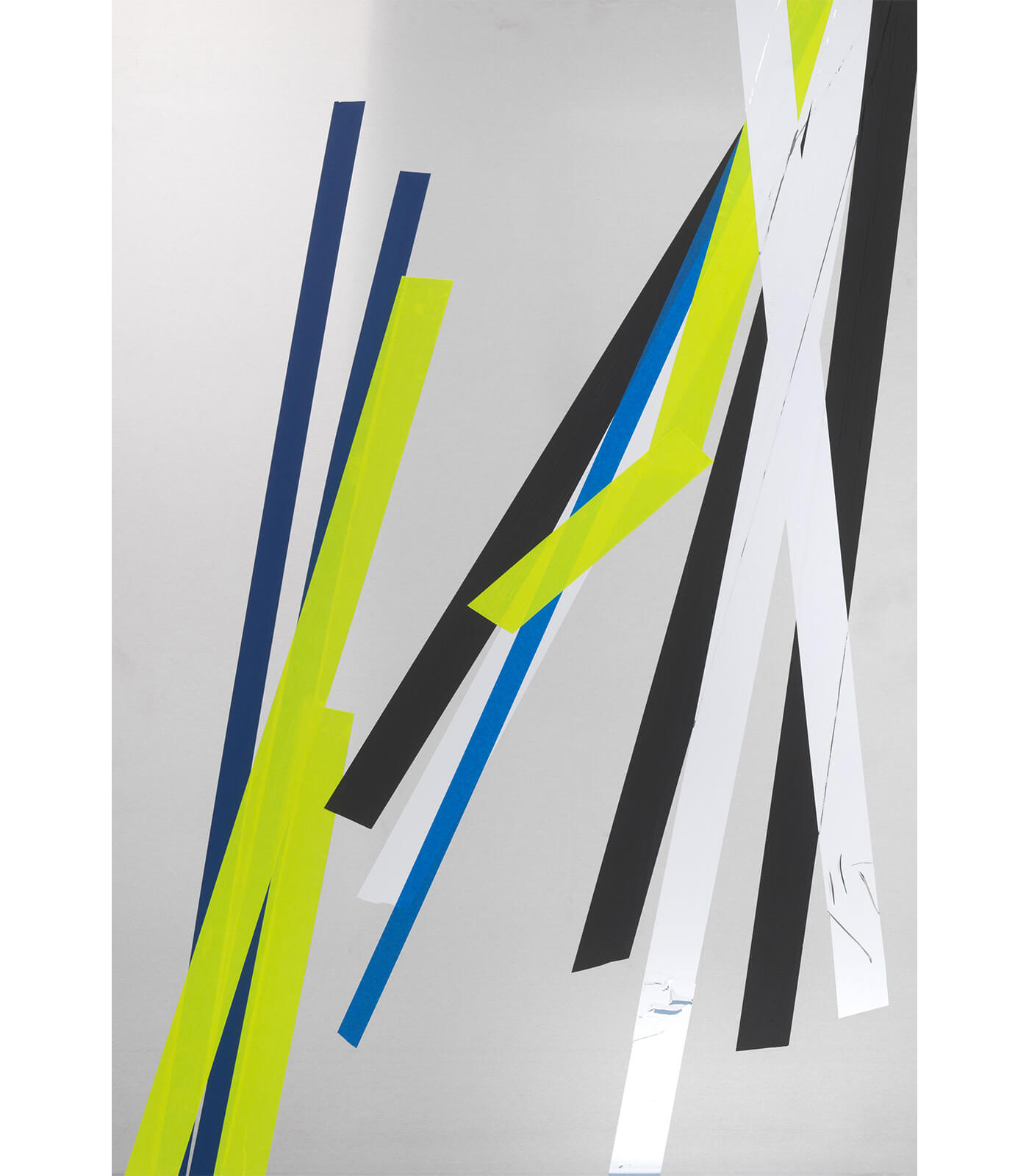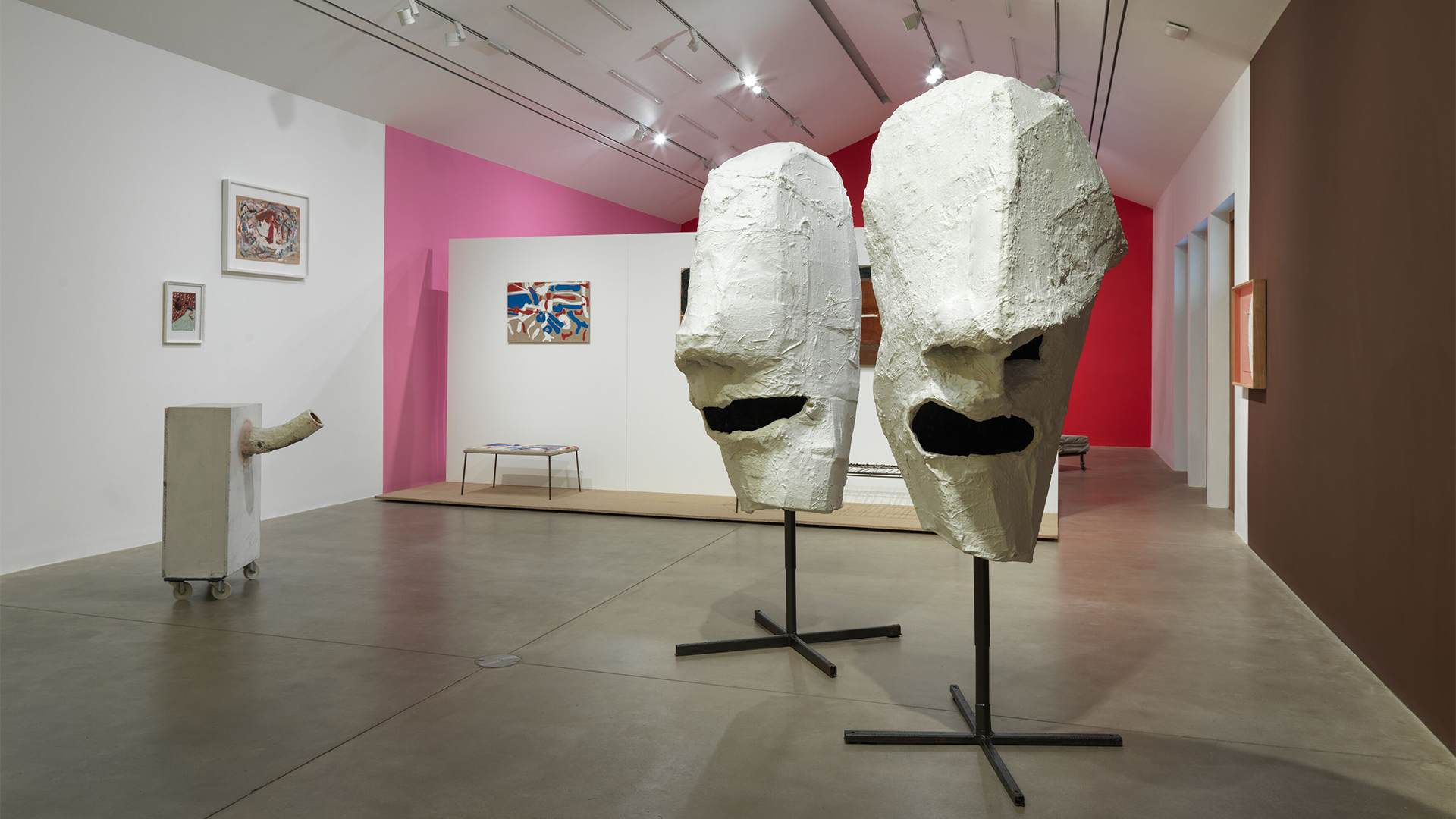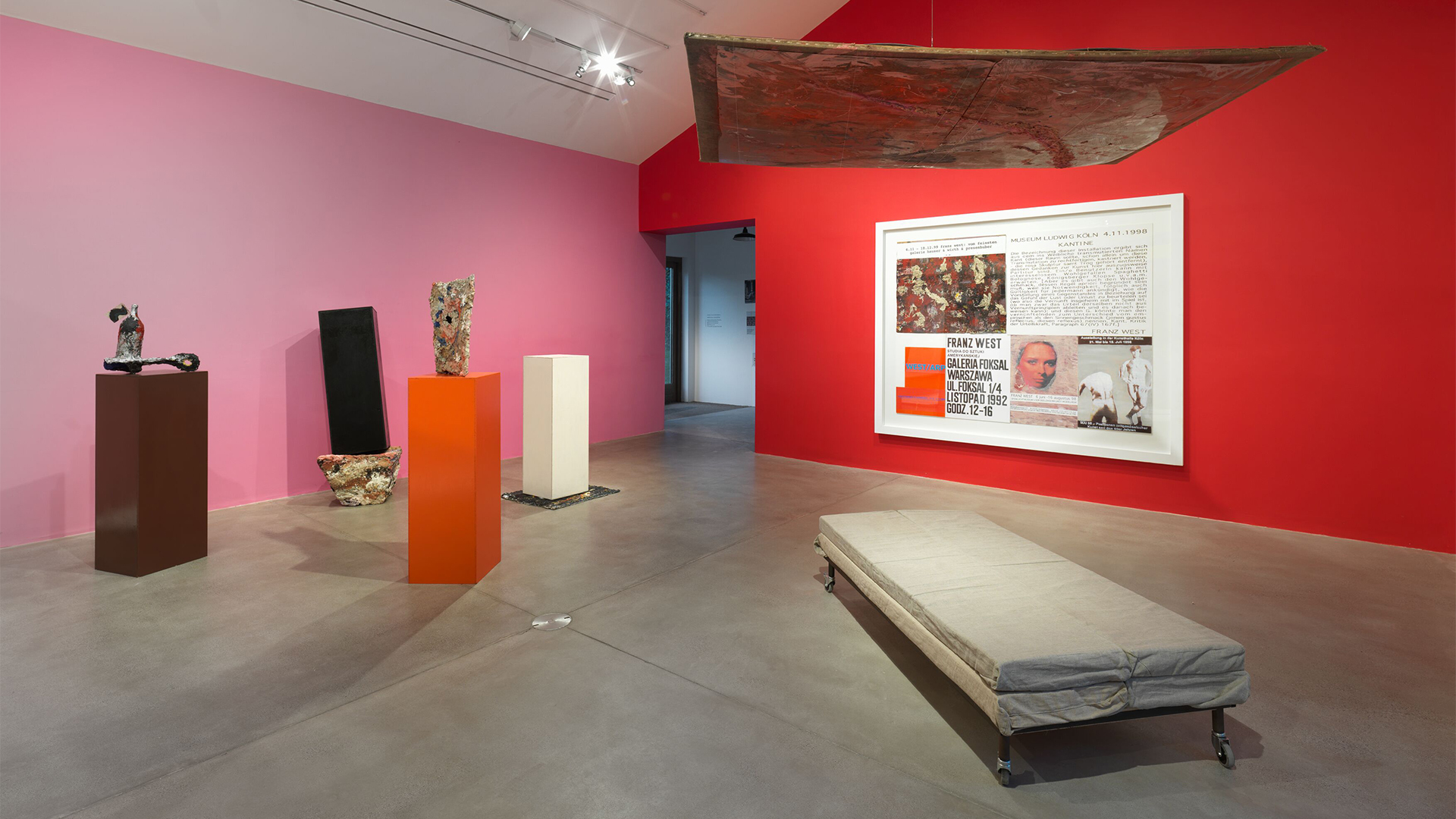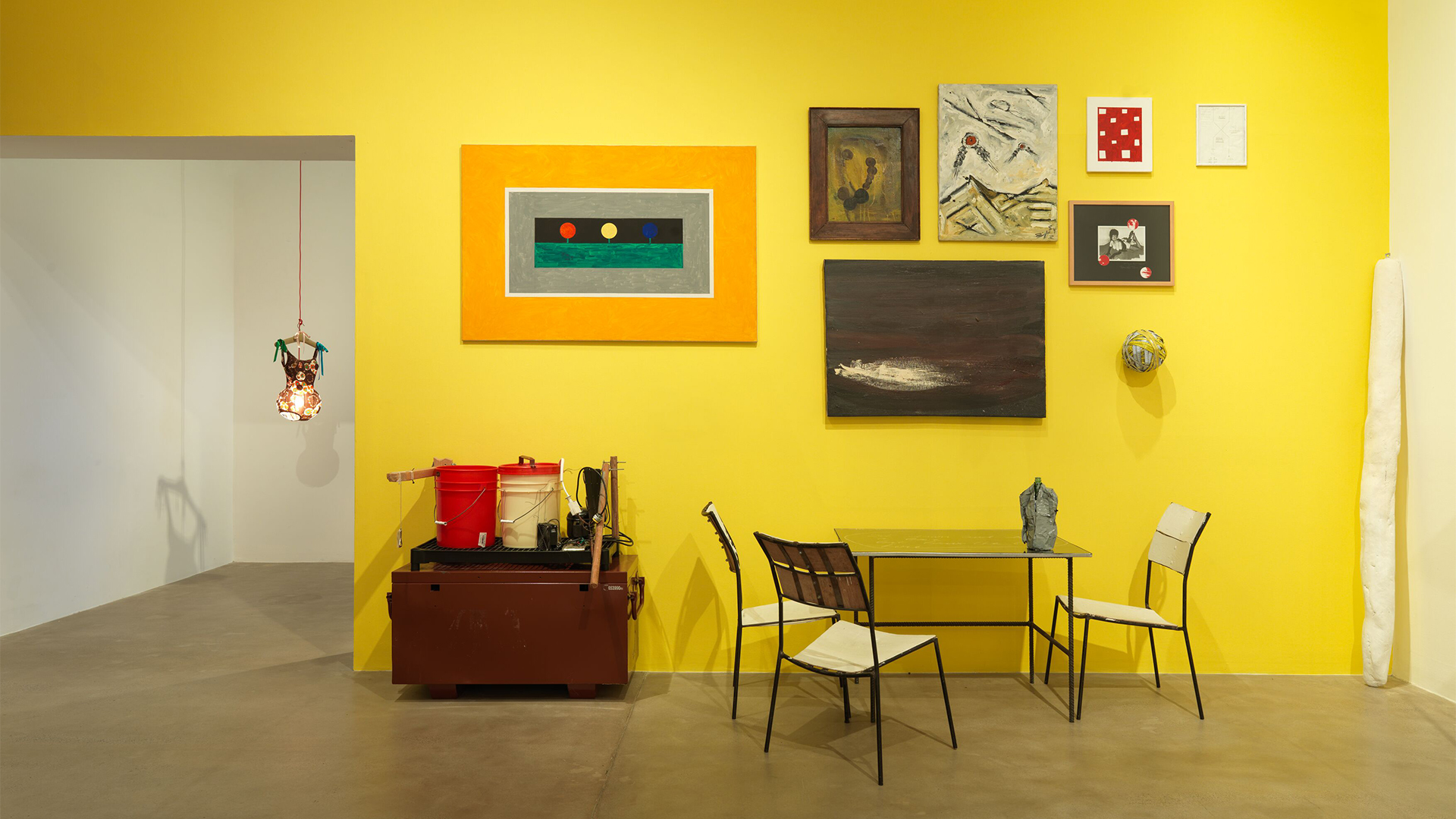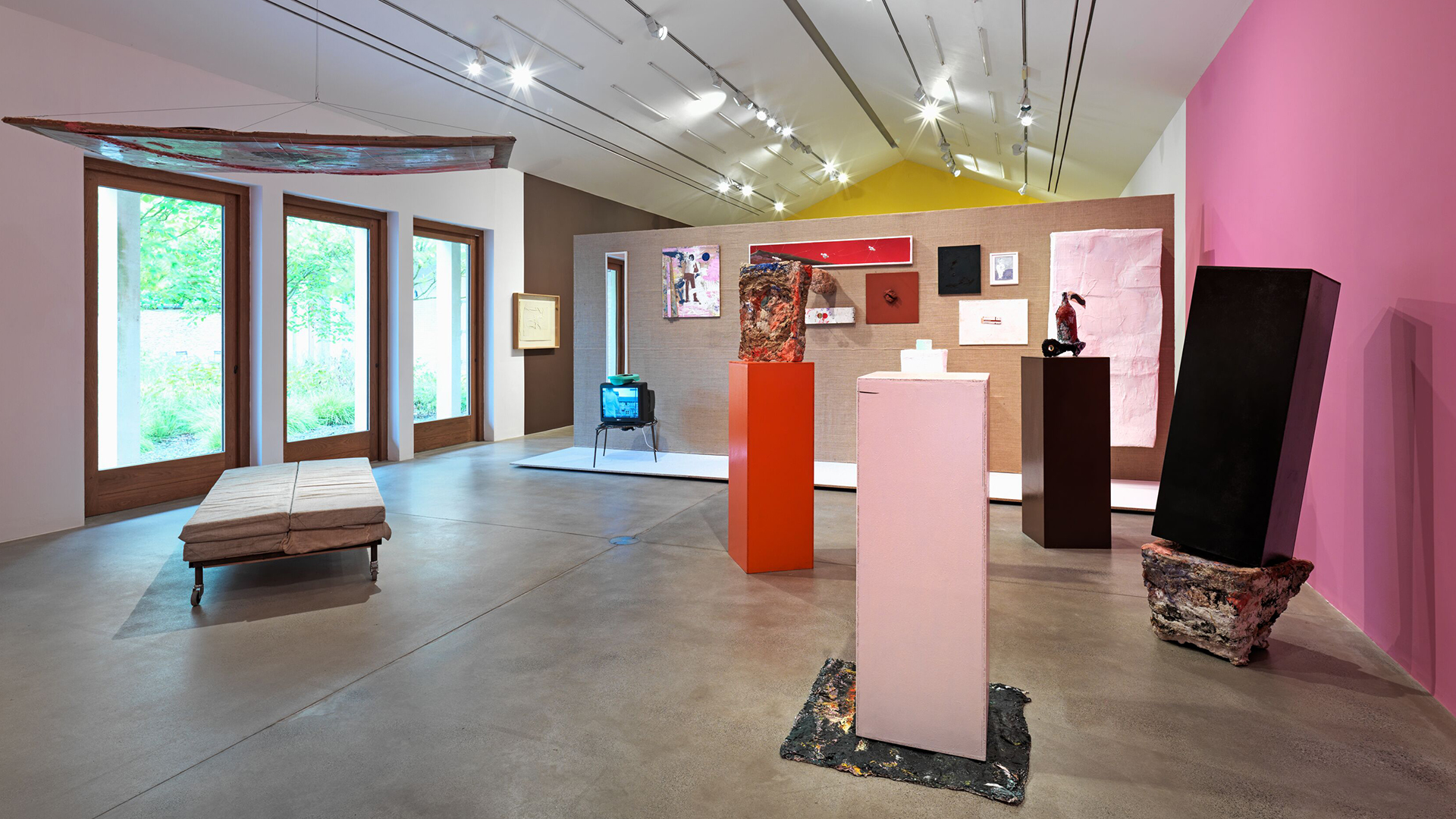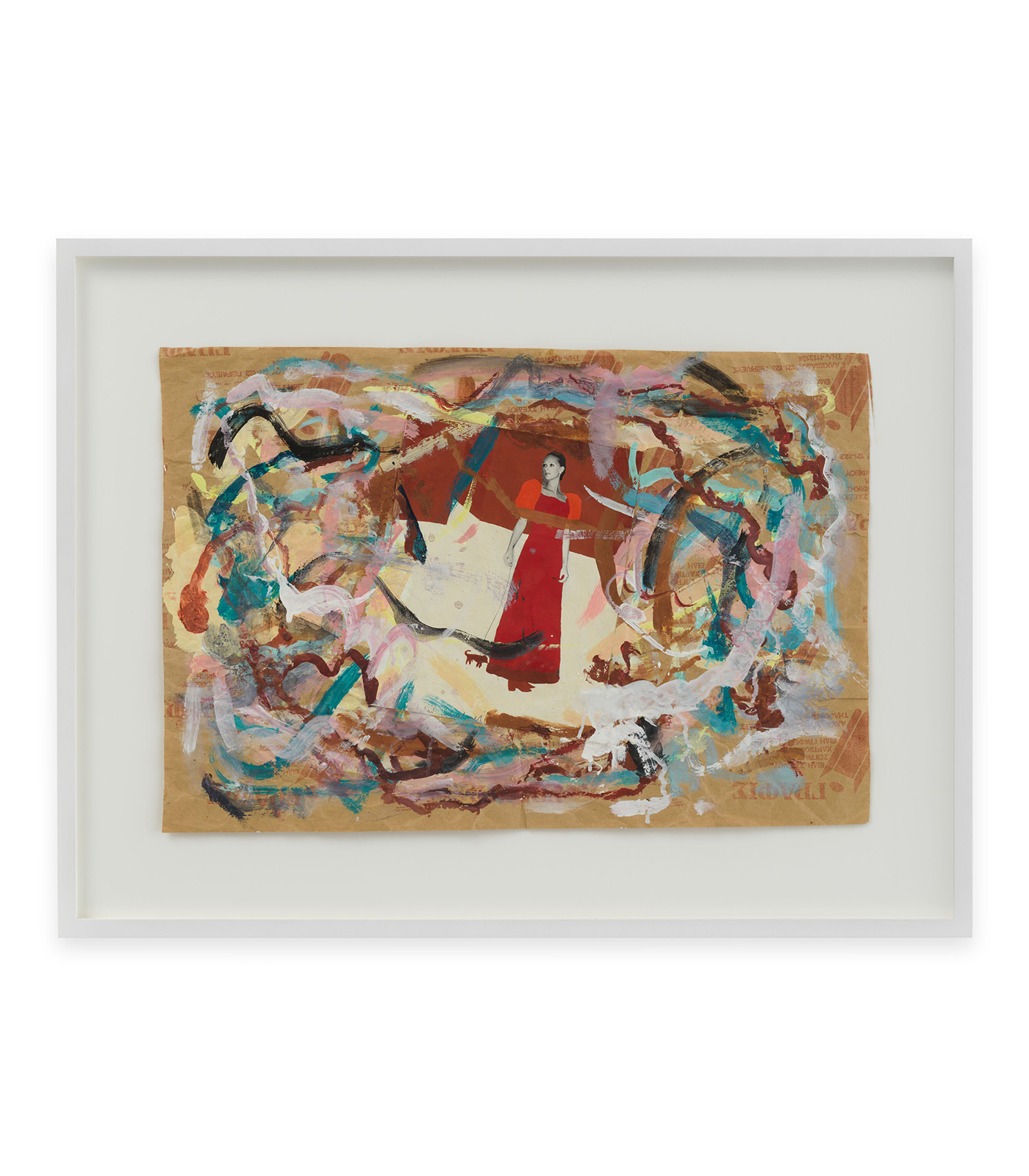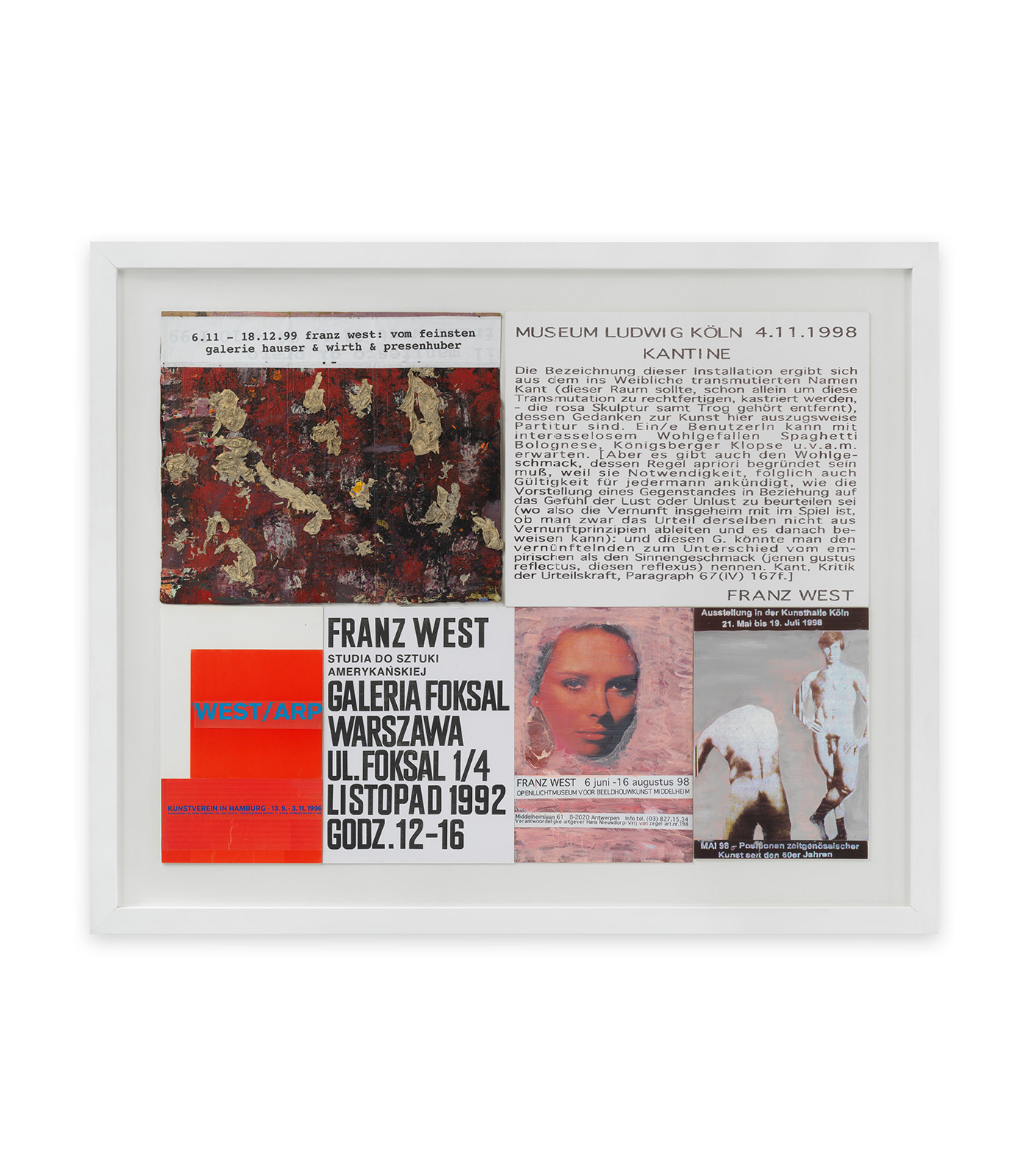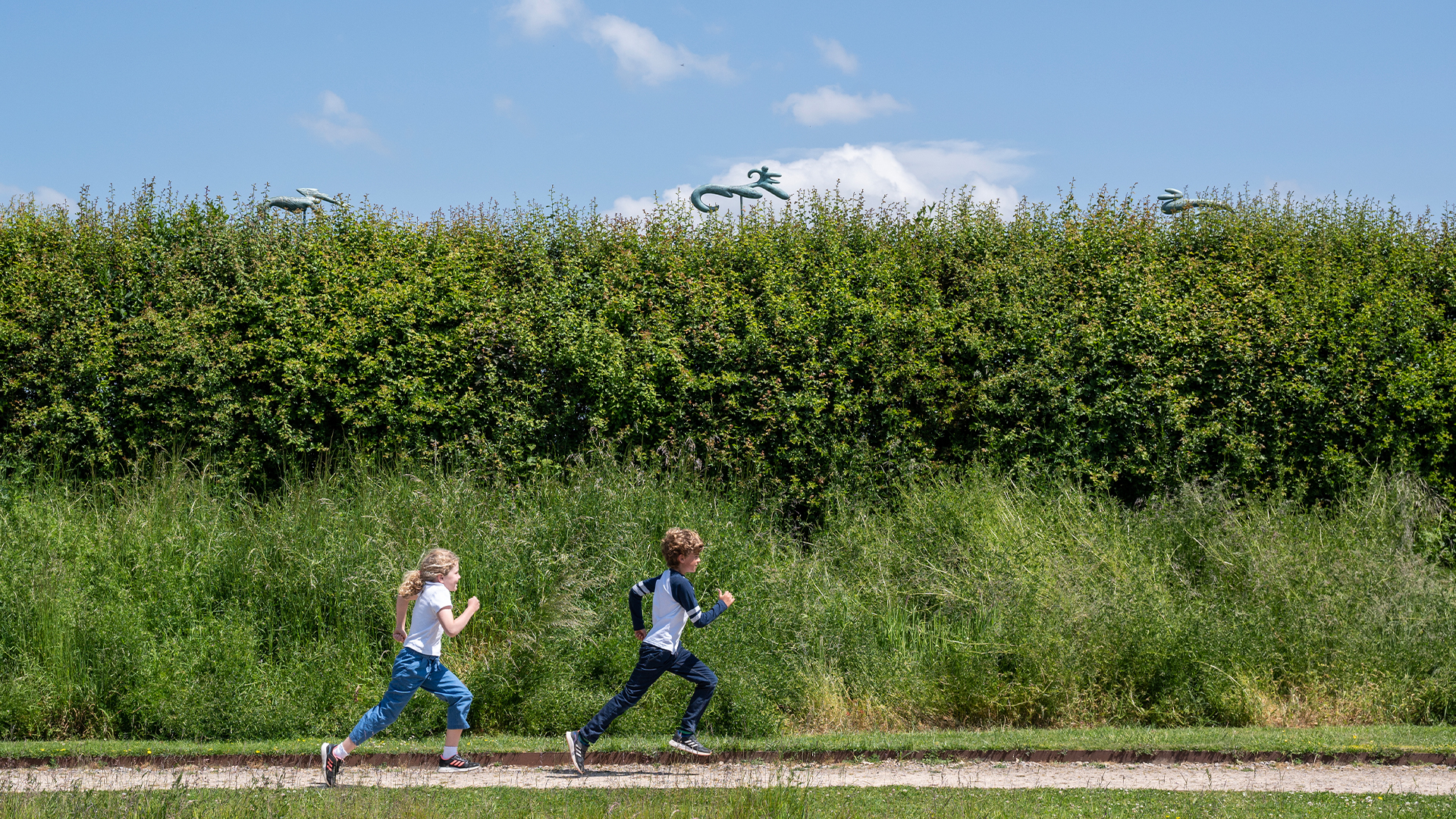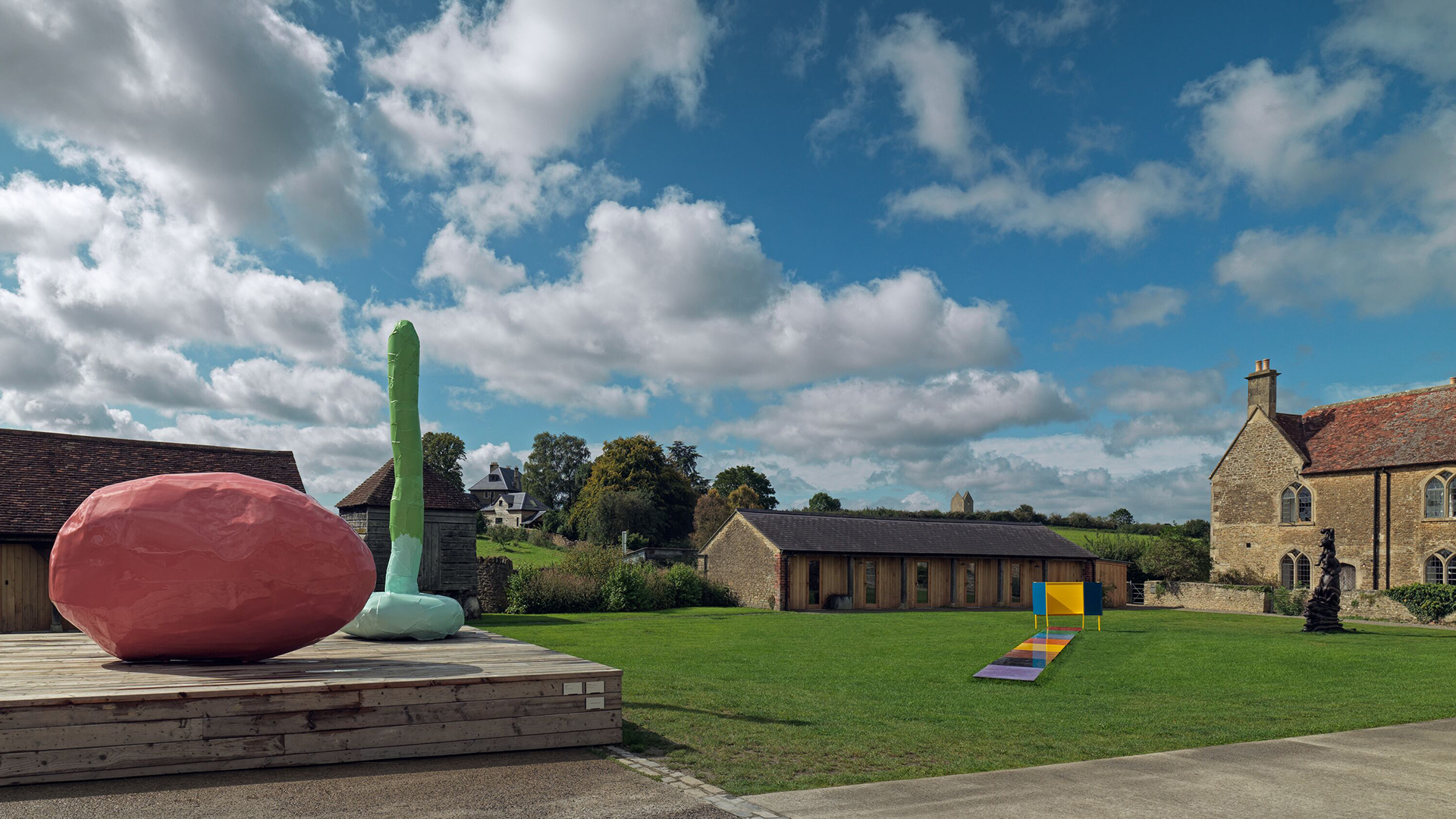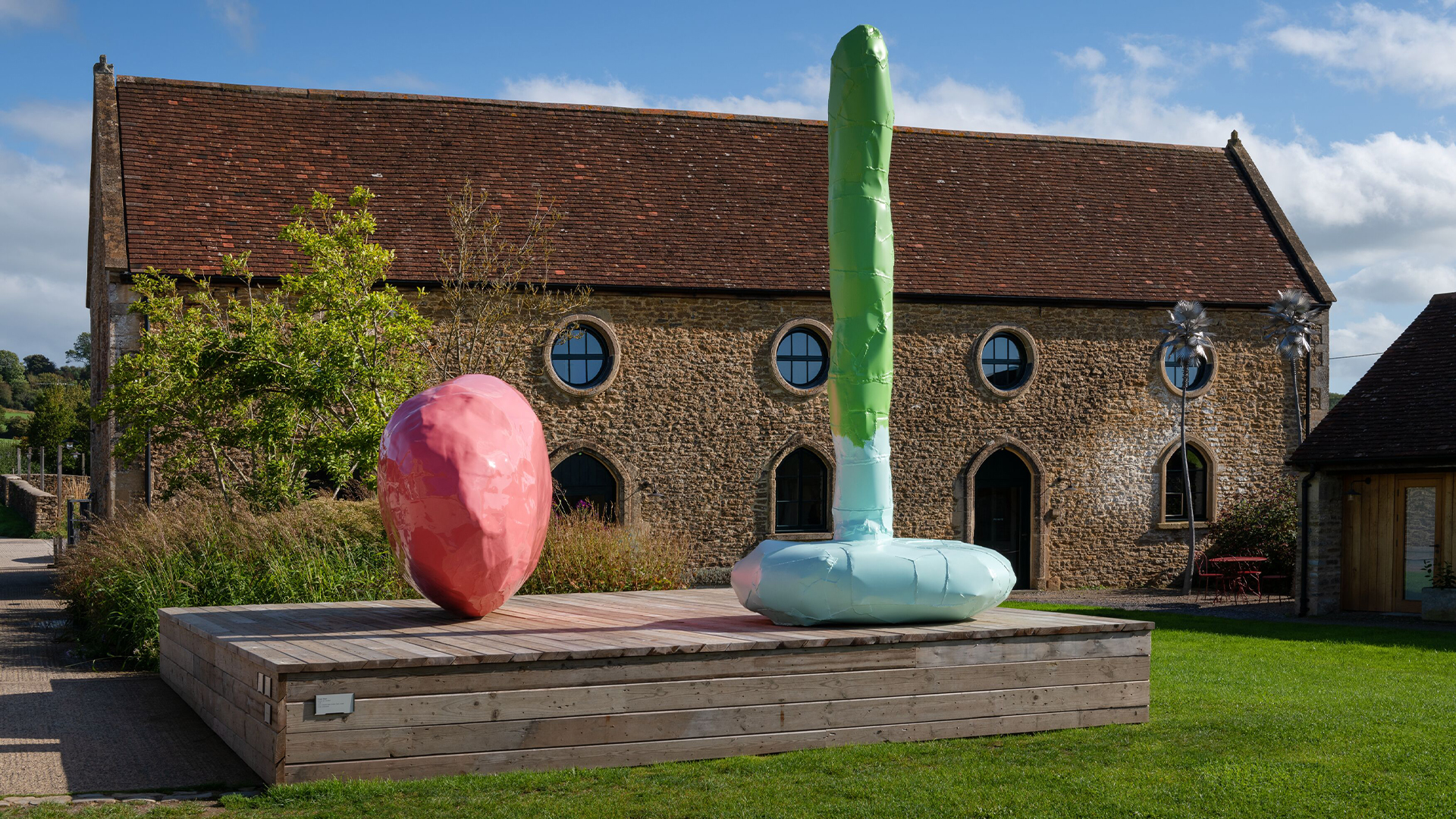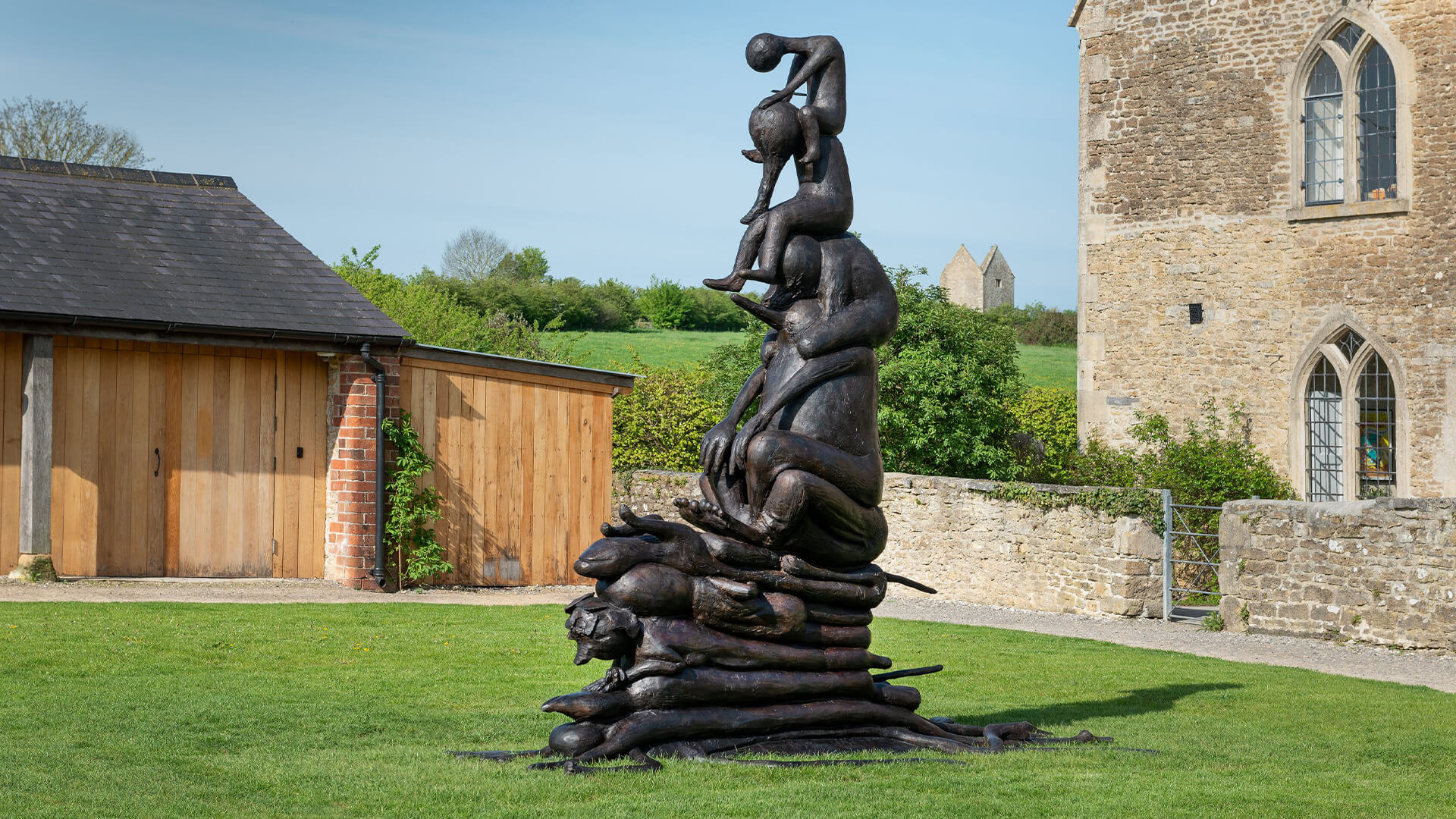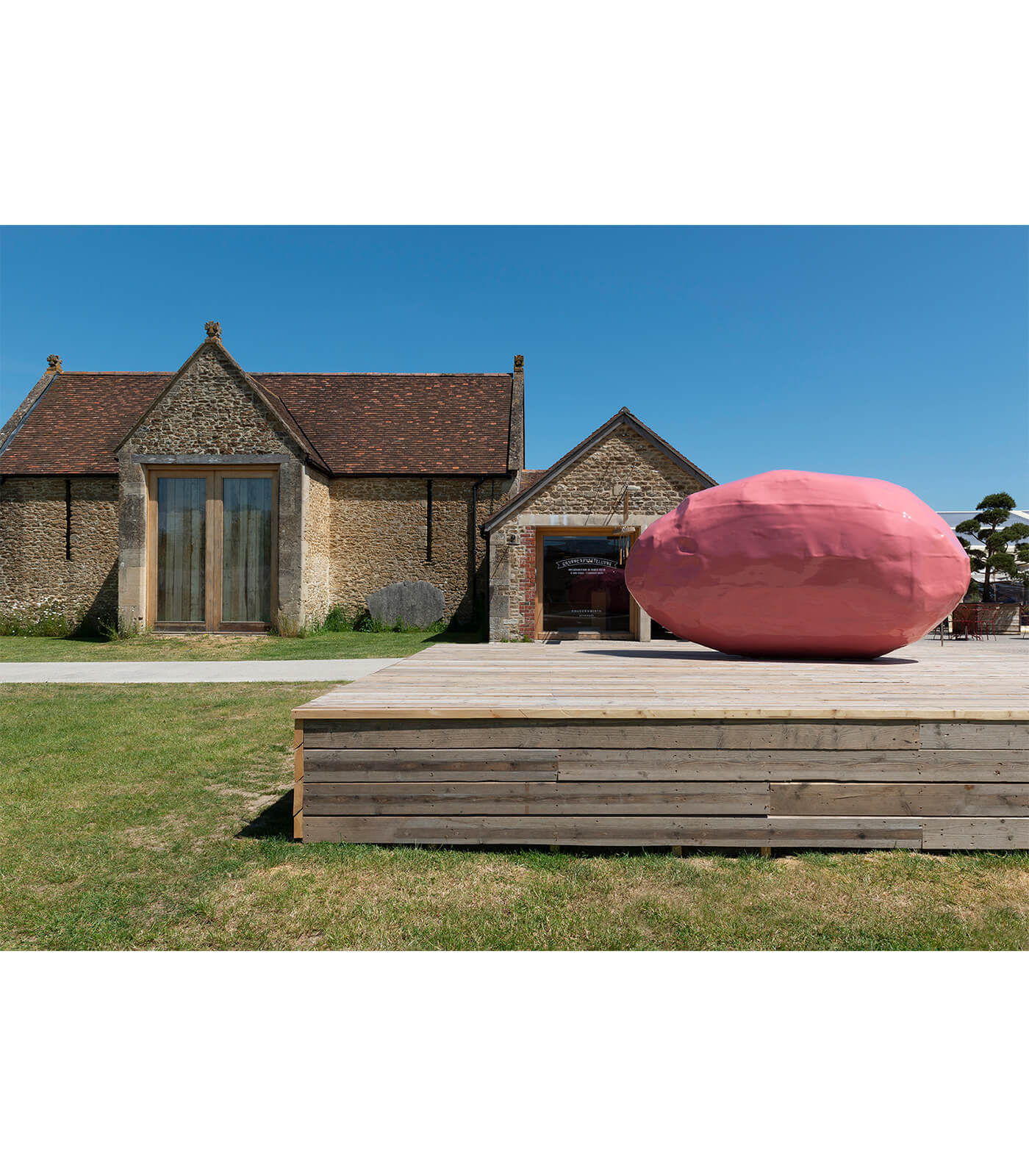A celebration of Hauser & Wirth’s Swiss heritage through a playful presentation of over 20 artists, including Phyllida Barlow, Martin Creed, Nicole Eisenman, Isa Genzken, Rodney Graham, Richard Hamilton, Mary Heilmann, Camille Henrot, Jenny Holzer, Richard Jackson, Rashid Johnson, Allison Katz, Paul McCarthy, Jason Rhoades, Pipilotti Rist, Dieter Roth, Björn Roth, Mika Rottenberg, Anri Sala, Cindy Sherman, Roman Signer, Lorna Simpson, Alina Szapocznikow, Franz West and David Zink Yi.
Explore the Exhibition
The multidisciplinary exhibition is inspired by the notion of a traditional Kunsthalle, conceived as a place to showcase groundbreaking art and explore contemporary issues with a broad audience. The entire site takeover provides a platform for discovery and interaction, extending to all five galleries, outdoor sculpture and a collaborative events program with the Roth Bar & Grill. The exhibition will evolve in three parts over the course of seven months, featuring immersive installations, solo presentations and iconic video works.
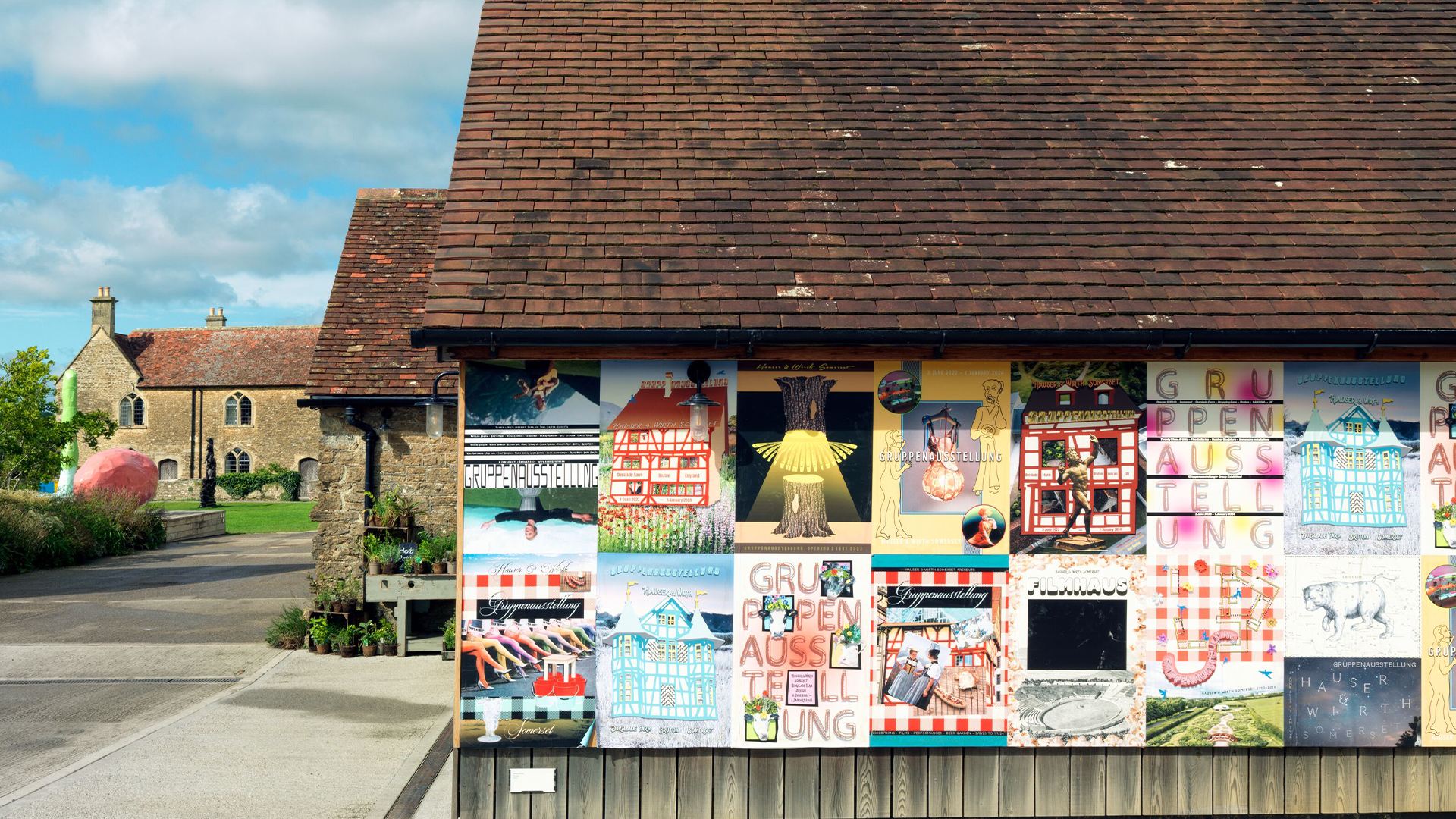
Artists are central to the experimental ethos of Hauser & Wirth Somerset, fostering new points of connection and inclusive approaches to experiencing art. Many of the artists featured within the exhibition, such as Martin Creed, Rashid Johnson and Pipilotti Rist, have lived and worked in Bruton as part of the gallery’s longstanding residency program, drawing inspiration from Durslade Farm, the local community and surrounding Somerset landscape. Our recent artist-in-residence, Allison Katz, has created a series of new exhibition posters that are displayed across the site. For Katz, designing posters is a way of playfully exploring protocols of typography, language and graphics, whilst addressing themes of consumption, desire and memory.
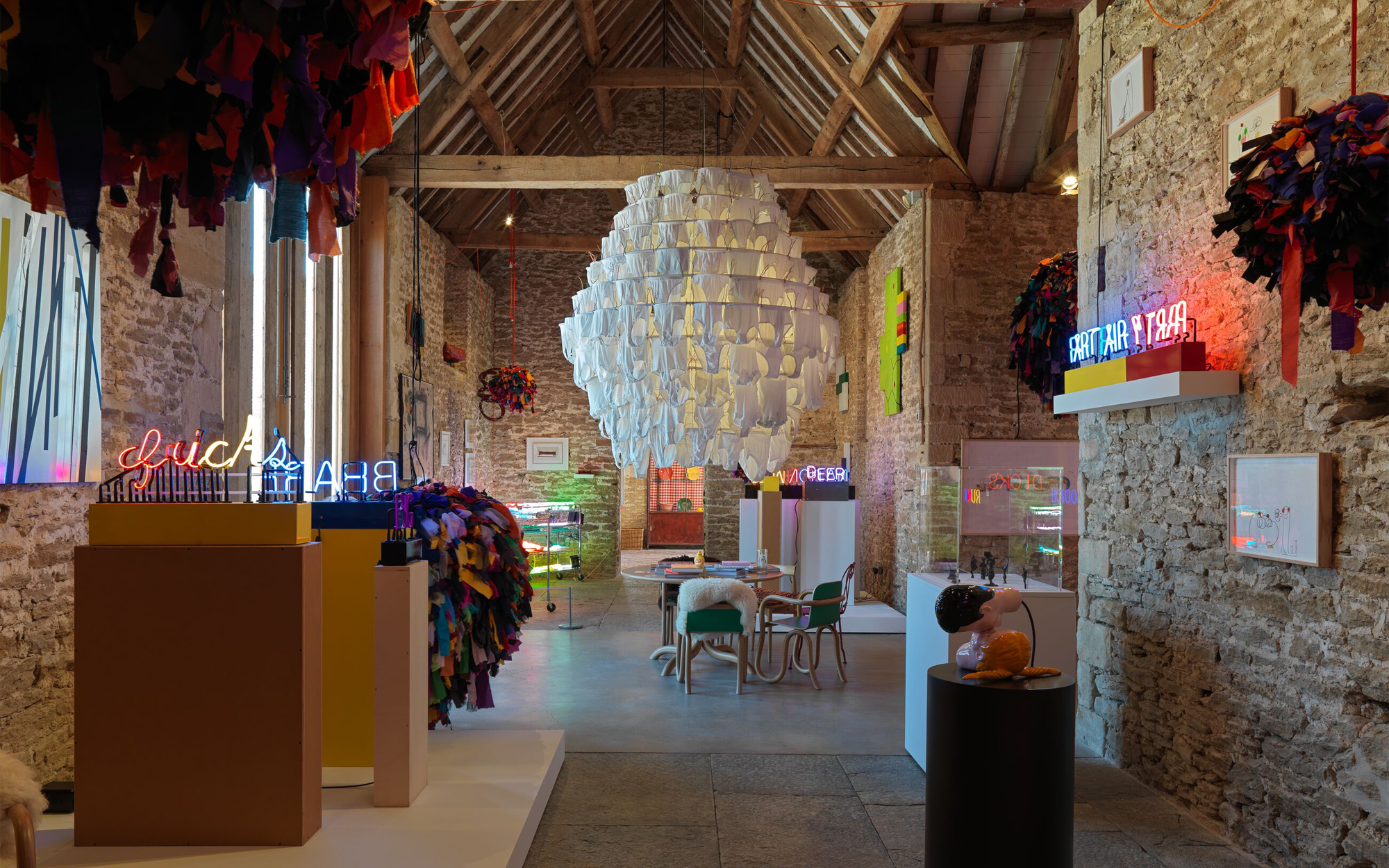
Martin Creed’s ‘Work No. 243 HELLO’ (2000) greets visitors as they enter the Threshing Barn. A true polymath, Creed’s work blurs the distinction between art and life, bringing the world into his work with fascinating transparency and humor. Stand out sculptures and video installations by Phyllida Barlow and Pipilotti Rist are centrepieces within the multisensory spectacle that fill the space from floor to ceiling. A pioneer of spatial video art, Rist’s ‘香港中環吊燈 (Central Hong Kong Chandelier)’ (2021) draws on the inner and outer worlds of kaleidoscopic wonderment. Rist encourages her viewers to recline, inviting them to contemplate, and at the same time, share a collective experience with their fellow spectators.
Richard Jackson’s neon signs flash with evocative puns and statements that engage with the artist’s interest in hunting culture and its vernacular, seen in works such as ‘HOTSHOT’ (2022), ‘BIG FAT PIG’ (2010) and ‘BARE BEAR’ (2008). Jackson’s work offers an ironic comment on the heroic pretensions associated with the medium, with works such as ‘Art Fair Party’ (2014), a direct and humorous critique of the structure of the commercial art world. Jason Rhoades’ neon installations, such as ‘Shelf (Mutton Chops) with Unpainted Donkey’ (2003), continue to signpost social commentary whilst pushing against the safety of cultural conventions. The unbridled, brazenly maximalist works attract, repulse and mystify the viewer, igniting questions that only multiply with prolonged exposure.
The Workshop and Pigsty Galleries have transformed to showcase Mika Rottenberg’s seminal video installation, ‘Cosmic Generator (Loaded #2)’ (2017 – 2018). This surreal and subversive video work explores globalisation, labor and spectacle, and is perhaps the best introduction to Rottenberg’s oeuvre. Filmed on-site at a market for plastic goods in Yiwu, China and in Mexicali, Mexico, a town near the US border, which is home to a large Chinese population, the video installation forms connections among seemingly disparate geographies. The video mixes scenes of real locations with elements of magical realism shot in a studio. The distinction between fantasy architecture and real space is further blurred by a fabricated tunnel surrounding the video installation, through which viewers enter the space, and a curtain of coloured tinsel through which they exit.
The ‘Kino / Cinema’ presents a changing weekly schedule of important film and video works over the course of the exhibition, featuring Martin Creed, Nicole Eisenman, Rodney Graham, Camille Henrot, Richard Jackson, Rashid Johnson, Paul McCarthy, Mika Rottenberg, Pipilotti Rist, Anri Sala and Lorna Simpson. Pipilotti Rist’s video works ‘I’m Not The Girl Who Misses Much’ (1986) and ‘(Entlastungen) Pipilottis Fehler’ <(Absolutions) Pipilotti’s Mistakes> (1988) launched the program. Both of these works appropriate and subvert the language of music videos, with the latter juxtaposing images of Rist collapsing to the ground with bursts of wildly scrambled electronic distortion. At the time, Rist was seen to be making a feminist and ironic comment on the representations of women in 1980s popular culture.
From September, the Bourgeois Gallery presents a collection of works by Austrian artist Franz West as ‘Act Two’ of ‘GRUPPENAUSSTELLUNG’. A modern master of the late 20th Century, West is best known for his tactile sculptures and interactive installations, employing everyday materials to rupture the boundaries between an ‘art object’ and the outside world. The elevation of audience participation in his artmaking often invited elements of chance, accidents and multiple interpretations. West did not believe in an isolated creative genius and instead looked to connection and community as a driving force, overturning conventional ideas of authorship. The installations ‘Kasseler Rippchen (Kassel-Style Spare Ribs)’ (1991/1996), ‘Synchronie (Abriss)’ (1997) and ‘Guest Bed (with Rudolf Polansky)’ (1999) is a demonstration of this, creating an environment within the gallery to experience work by multiple artists.
A new outdoor sculpture presentation is interspersed throughout the site, including works by Camille Henrot, Jenny Holzer, Rashid Johnson, Franz West and David Zink Yi. Camille Henrot’s bronze sculptures emphasize the delicate equilibrium between thing and object, and the mutual generation of bodies, words and shapes. Henrot’s ‘Family of Men’ (2022), on view in the farmyard in front of Durslade Farmhouse, offers an image of the crushing power of authority and ancestry, with the figures squashing each other in their quest for elevation and growth. Franz West’s colorful and bold work ‘Autostat’ (1996) is displayed on the plinth in front of the gallery’s entrance, alongside ‘Gartenpouf (Garden Pouf)’ (2006), and David Zink Yi’s stainless steel replicas of ‘Washingtonia robusta’ palms continue to experiment with perspective and idealised artificiality, nature and architecture, also on view in the farmyard.
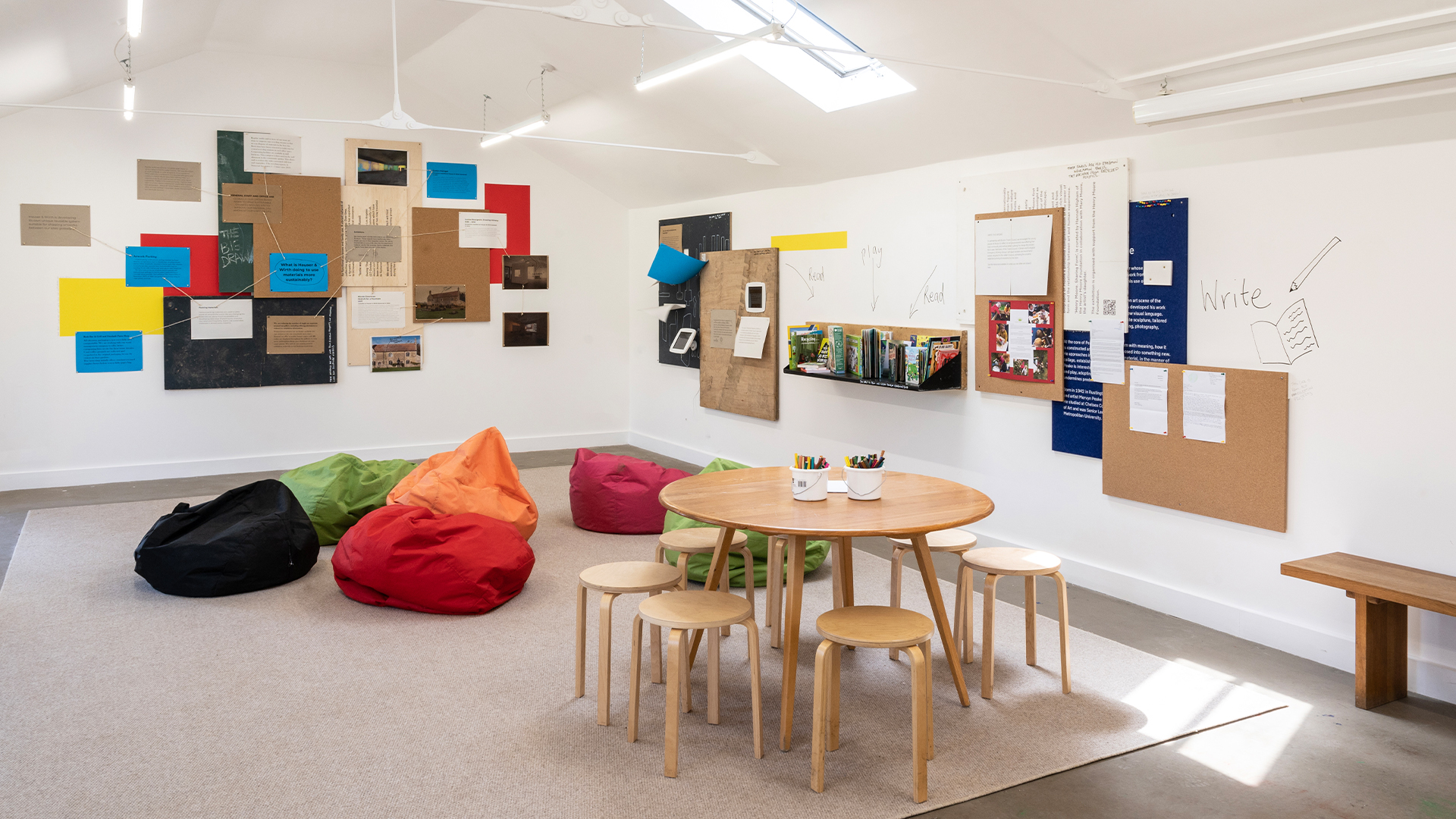
Education Lab: ‘Turning the Inside Outside: Sustainable Actions in the Art World’
Inspired by artists Mika Rottenberg and Pipilotti Rist, this interactive learning space provides a dynamic platform for collaboration across the gallery’s green teams globally. Visitors are invited to take part in the activation of the space, to engage with themes of environmental sustainability, to be inspired and to collaborate and create change in this area.
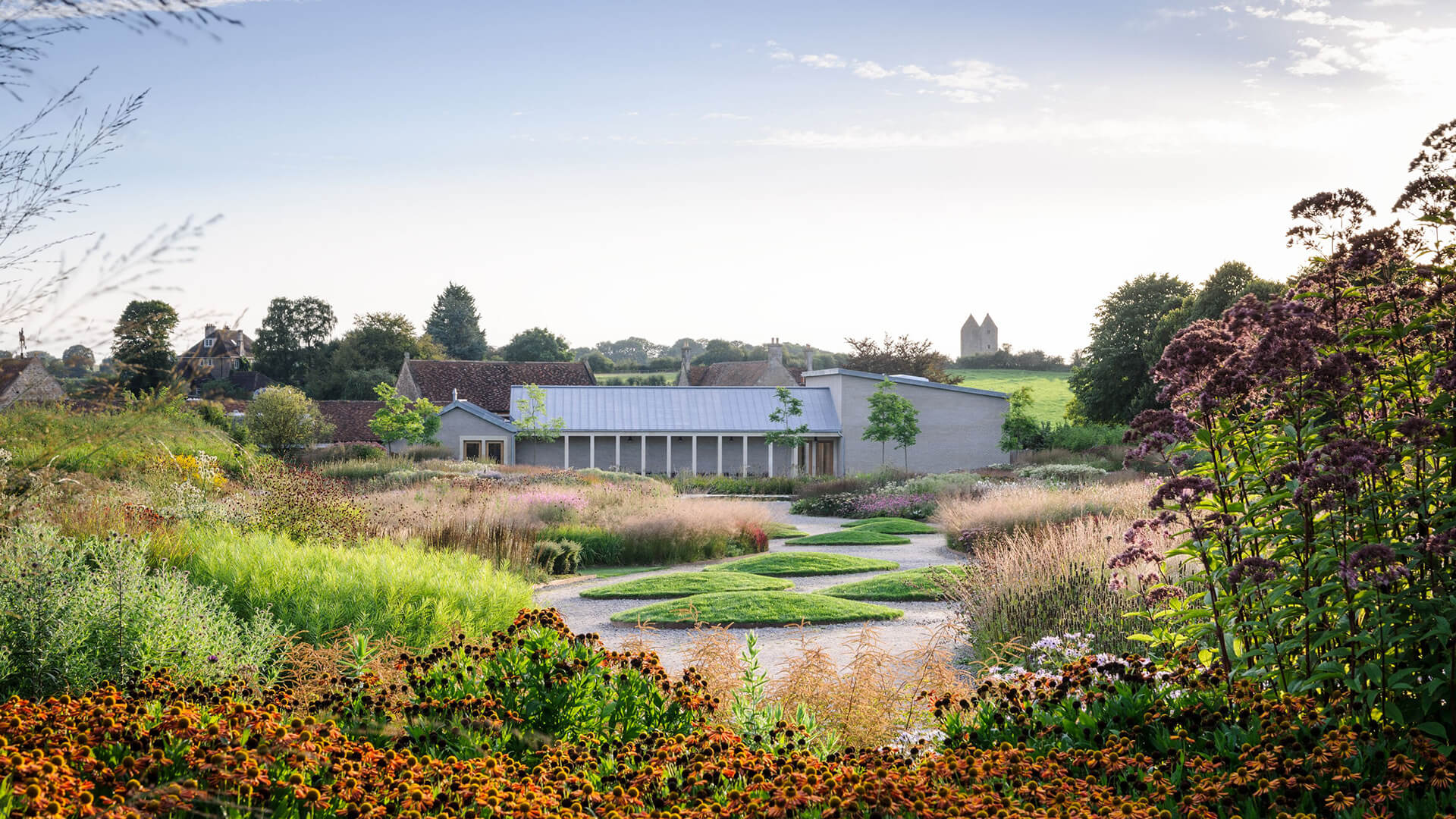
The gallery is open Tuesday – Sunday, 10 am – 5 pm.
About the Artists
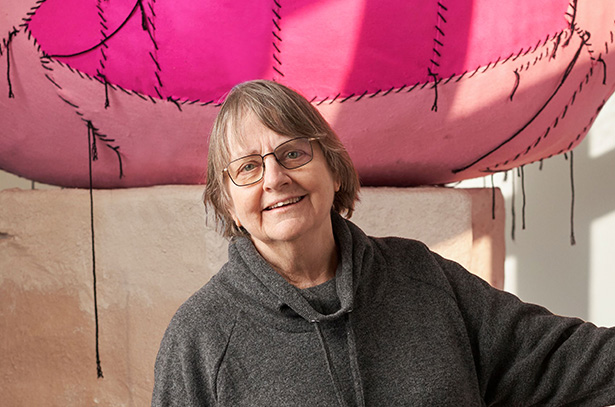
Phyllida Barlow
For almost 60 years, British artist Phyllida Barlow took inspiration from her surroundings to create imposing installations that can be at once menacing and playful. She created large-scale yet anti-monumental sculptures from inexpensive, low-grade materials such as cardboard, fabric, plywood, polystyrene, scrim, plaster and cement. These constructions were often painted in industrial or vibrant colors, the seams of their construction left at times visible, revealing the means of their making.
Barlow’s restless invented forms stretch the limits of mass, volume and height as they block, straddle and balance precariously. The audience is challenged into a new relationship with the sculptural object, the gallery environment and the world beyond.
‘There’s something about walking around sculpture that has the possibility of being reflective, like walking through a landscape,’ Barlow has said. ‘The largeness of sculpture has that infinite possibility to make one engage beyond just the object itself and into other realms of experience.’
Barlow exhibited extensively across institutions internationally and in 2017 represented Britain at the Venice Biennale.
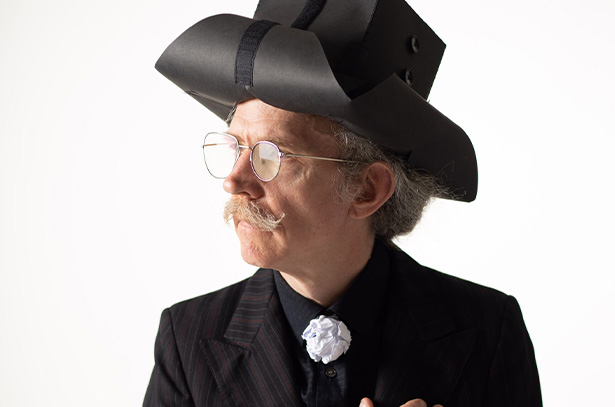
Martin Creed
‘Creed is a social artist; the true magic of his work lies in the way it interacts with people and places.’
—Jonathan Jones, ‘Martin Creed’s stairway to heaven,’ in The Guardian, London, UK, 1 August 2011, ill. (on Work No. 1059)

Nicole Eisenman
Nicole Eisenman lives and works in Brooklyn, New York. She is a MacArthur Foundation Fellow and was inducted into the American Academy of Arts and Letters in 2018. Her work was included in both the 2019 Venice Biennale and the 2019 Whitney Biennial. Recent solo exhibitions include 'What Happened' at the Museum Brandhorst, Munich, Germany (2023), traveling to Whitechapel Gallery, London, United Kingdom (2023) and MCA Chicago, Chicago, IL (2024); 'Heads, Kisses, Battles: Nicole Eisenman and the Moderns' at Kunsthalle Bielefeld, Bielefeld, Germany (2021), traveling to Aargauer Kunsthaus, Aarau, Switzerland (2022), Fondation Vincent Van Gogh, Arles, France (2022), and Kunstmuseum Den Haag, Netherlands (2022); 'Giant Without a Body' at the Astrup Fearnley Museet, Oslo, Norway (2021); 'Sturm und Drang' at the Contemporary Austin, Austin, TX (2020); and 'Baden Baden Baden', at the Staatliche Kunsthalle, Baden-Baden, Germany (2019). Having established herself as a painter, Nicole Eisenman has expanded her practice into the third dimension.
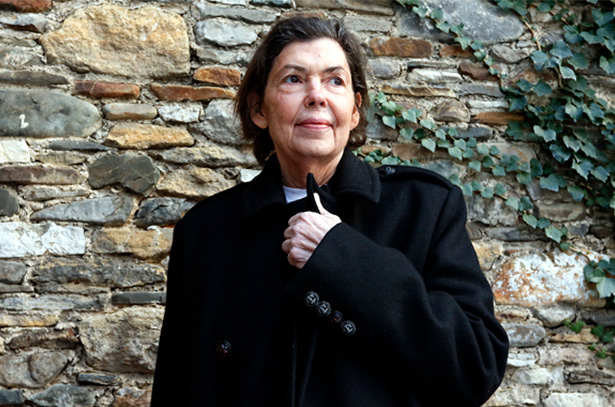
Isa Genzken
Isa Genzken has long been considered one of Germany’s most important and influential contemporary artists. Born in Bad Oldesloe, Germany, Genzken studied at the renowned Kunstakademie Düsseldorf whose faculty at the time included Joseph Beuys, Bernd and Hilla Becher, Benjamin H.D. Buchloh and Gerhard Richter. Since the 1970s, Genzken’s diverse practice has encompassed sculpture, photography, found-object installation, film, drawing and painting. Her work borrows from the aesthetics of Minimalism, punk culture and assemblage art to confront the conditions of human experience in contemporary society and the uneasy social climate of capitalism.Genzken is best known for her sculptures, gaining attention for her minimalist oriented Hyperbolos and Ellipsoids in the late 70s, and architecturally-inflected works such as her recent epoxy resin windows and skyscraper Columns from the 90s. Genzken’s practice is incredibly wide-ranging, but her work remains dedicated to challenging the viewer’s self-awareness by means of physically altering their perceptions, bringing bodies together in spaces and integrating elements of a mixed media into sculpture.
Genzken’s totemic columns, pedestal works and collages combine disparate aspects from her many sources in seemingly nonsensical, yet harmonious sculptural compilations. These sculptures take the form of precariously stacked assemblages of potted plant designer furniture, empty shipping crates and photographs, among other things, arranged with the traditions of modernist sculpture in mind. With this cacophonous array of objects, Genzken undermines the classical notions of sculpture, re-creating the architectural dimensions of her beloved skyscrapers and the riotous colors of the city streets. Devoid of the weightiness and overpowering scale seen in the sculptures of her Minimalist predecessors, her work abandons notions of order and power, allowing the viewer to relate to the works’ inherently human qualities of fragility and vulnerability.
Inspired by the stark severity of modernist architecture and the chaotic energy of the city, Genzken’s work is continuously looking around itself, translating into three-dimensional form the way that art, architecture, design and media affects the experience of urban life, and the divides between public and private. There is an intuitive and consistent manner to Genzken’s work, not only in dramatising aspects of space and scale for the audience, but in creating new dialogues and contact with surfaces of material. The socio-political content is evident and central to her oeuvre.
In 2017, Genzken was awarded the prestigious Goslarer Kaiserring (or Emperor’s Ring) by the city of Goslar, Germany.
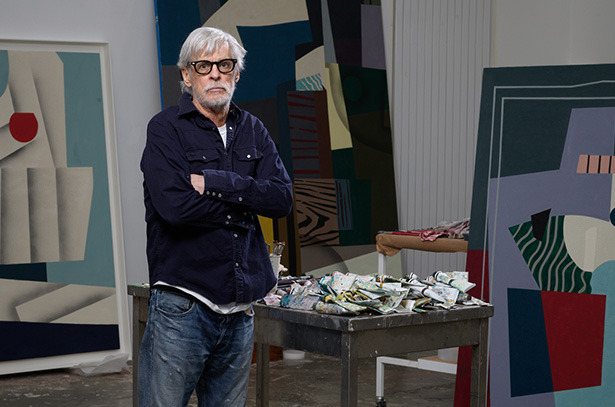
Rodney Graham
With a practice spanning five decades, Canadian artist Rodney Graham (1949 – 2022) operated through systems of quotation, reference and adaptation. From the 1980s, Graham expanded his diverse oeuvre to encompass photography, painting, sculpture, film, video and music. As actor, performer, producer, historian, writer, poet, sound engineer and musician, Graham’s art examined the complexities of Western culture through strategies of disguise, as he shifted seamlessly into different roles and characters. Casting himself as a succession of motley characters, Graham inhabited different personae, genres and art forms for the duration of his career. ‘It may be a burden to reinvent oneself every time,’ Graham said, ‘but it makes things more interesting.’
Often, Graham’s works revolve around a central absurdity, with his characters caught up in inescapable loops as if by a curse. In this sense, the central themes of Graham’s work are the relationship between civilization and nature and the transformation of traditional genres and linear narrative models into banality and irony, with displacement and duplication his favorite artistic strategies. His inspirations included such varied sources as Sigmund Freud, Mallarmé, Richard Wagner, Edgar Allan Poe, Ian Fleming and the Brothers Grimm. He emulated Donald Judd and Nirvana’s Kurt Cobain, or reconstructed Albert Hoffmann’s experiments with LSD. There is a gentle humor and a certain sense of nostalgia about the artist’s melancholy observations of modernity.
Graham’s signature photographic lightbox works are elaborate, allegorical and witty compositions focused on his use of the self-portrait to explore scenarios from our collective cultural memory. Each image is a fictional self-portrait with the artist in costume but always recognizable, portraying a vast array of characters. From the props and their placement within the frame, to the elaborate costumes and stage sets, each scene—either created in his former Vancouver studio or in public facilities around the city—is purposefully constructed and executed with an exceptional degree of technical expertise and humor.
In 1997, Graham represented Canada at the 47th Venice Biennale with his film work ‘Vexation Island’ (1997), which bought him to international recognition. He was subsequently awarded the Kurt Schwitters Prize in 2003, the Gershon Iskowitz Prize in 2004 and the DAAD Scholarship in 2001. In 2011, Graham was given The Audain Prize for Lifetime Achievement in Visual Arts, British Columbia, Canada. He was appointed as an Officer of the Order of Canada in 2016 for his contributions to Canadian contemporary art.
Graham’s work has been the subject of numerous major solo exhibitions internationally, among them a 2004 retrospective that toured the US and Canada, including, among other venues, MoCA Los Angeles, ICA Philadelphia, Vancouver Art Gallery. Other institutional exhibitions include Serlachius Museum Gösta, Mänttä, Finland (2020); Museum Frieder Burda, Baden-Baden, Germany (2017); Museum Voorlinden, Wassenaar, Netherlands (2017); BALTIC Centre for Contemporary Art, Gateshead, UK (2017); Le Constortium, Dijon, France (2016); Sammlung Goetz, Munich, Germany (2015); Charles H. Scott Gallery, Emily Carr University of Art and Design, Vancouver, Canada (2014); Vancouver Art Gallery, Canada (2012); Museum der Moderne, Salzburg, Austria (2011); Museu D’Art Contemporani de Barcelona, Spain (2010); Jeu de Paume, Paris, France (2009); Whitechapel Art Gallery, London, UK (2002); Hamburger Bahnhof, Berlin, Germany (2001); and Kunsthalle Wien, Vienna, Austria (1999).
His work is included in collections worldwide, such as Musée national d’art moderne – Centre Pompidou, Paris; Tate, London; The Museum of Modern Art, New York; Vancouver Art Gallery, Vancouver; National Gallery of Canada, Ottawa; MACBA, Barcelona; Nationalgalerie – Staatliche Museen zu Berlin, Berlin.
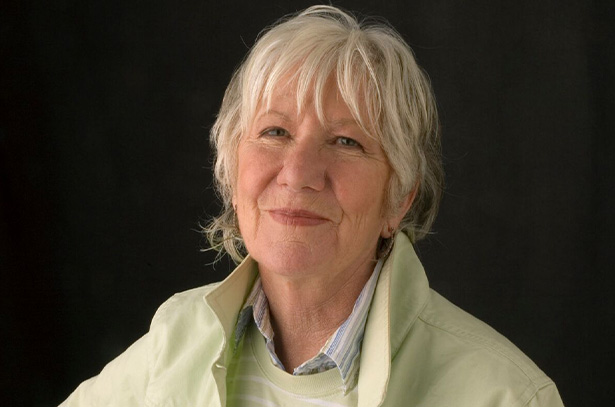
Mary Heilmann
Influenced by 1960s counterculture, the free speech movement, and the surf ethos of her native California, Mary Heilmann ranks amongst the most influential abstract painters of her generation. Considered one of the preeminent contemporary Abstract painters, Heilmann’s practice overlays the analytical geometries of Minimalism with the spontaneous ethos of the Beat Generation, and are always distinguishable by their often unorthodox—always joyful—approach to color and form.
Raised in San Francisco and Los Angeles, Heilmann completed a degree in literature, before she studied ceramics at Berkeley. Only after moving to New York in 1968 did she begin to paint. While most artists at that time were experimenting with the concept of dematerialization and demanding that painting should avoid any references to experience outside the material presence of the work itself, Heilmann opted for painting, rebelling against the accepted rules. ‘Rather than following the decrees of modern, non-representational formalism, I started to understand that the essential decisions taken during the creative process were more and more related to content. The Modern movement was over…’
Since then, Heilmann has created compositions that evoke a variety of associations. Her work may be non-representational and based on an elementary, geometrical vocabulary—circles, squares, grids and stripes—but there is always something slightly eccentric, casual about them. The simplicity of the forms is played down by a deceptive form of nonchalance: the contours are not clearly defined. In some paintings, amorphous forms appear to melt into each other like liquid wax. Splashes of color can be discerned, sharp edges bleed for no apparent reason, and the ductus of the brushstrokes is always perceptible. Heilmann’s casual painting technique conceals a frequently complex structure that only gradually reveals itself to the viewer.

Camille Henrot
Born in 1978 in Paris, France, the artist lives and works in New York City.
The practice of French artist Camille Henrot moves seamlessly between film, painting, drawing, bronze, sculpture, and installation. Henrot draws upon references from literature, psychoanalysis, social media, cultural anthropology, self-help, and the banality of everyday life in order to question what it means to be both a private individual and a global subject.
A 2013 fellowship at the Smithsonian Institute resulted in her film ‘Grosse Fatigue,’ for which she was awarded the Silver Lion at the 55th Venice Biennale. She elaborated ideas from ‘Grosse Fatigue’ to conceive her acclaimed 2014 installation ‘The Pale Fox’ at Chisenhale Gallery in London. The exhibit, which displayed the breadth of her diverse output, went on to travel to institutions including Kunsthal Charlottenburg, Copenhagen; Bétonsalon – Centre for art and research, Paris; Westfälischer Kunstverein, Münster, Germany; and Tokyo Opera City Art Gallery, Japan. In 2017, Henrot was given carte blanche at Palais de Tokyo in Paris, where she presented the major exhibition ‘Days Are Dogs,’ She is the recipient of the 2014 Nam June Paik Award and the 2015 Edvard Munch Award, and has participated in the Lyon, Berlin, Sydney and Liverpool Biennials, among others.
Henrot has had numerous solo exhibitions worldwide, including the Middelheim Museum, Belgium; National Gallery of Victoria, Melbourne; New Museum, New York; Schinkel Pavilion, Berlin; New Orleans Museum of Art; Fondazione Memmo, Rome; Tokyo Opera City Art Gallery, Japan, among others.
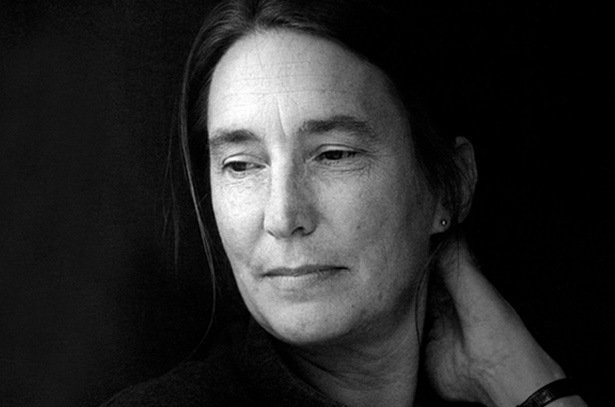
Jenny Holzer
Jenny Holzer is an American conceptual and installation artist whose work deploys text in public spaces across an array of media, including electronic signs, carved stone, paintings, billboards, and printed materials. Holzer’s oeuvre provokes public debate and illuminates social and political justice. Celebrated for her inimitable use of language and projects in the public sphere, Holzer creates a powerful tension between the realms of feeling and knowledge, with a practice that encompasses both individual and collective experiences of power and violence, vulnerability and tenderness.
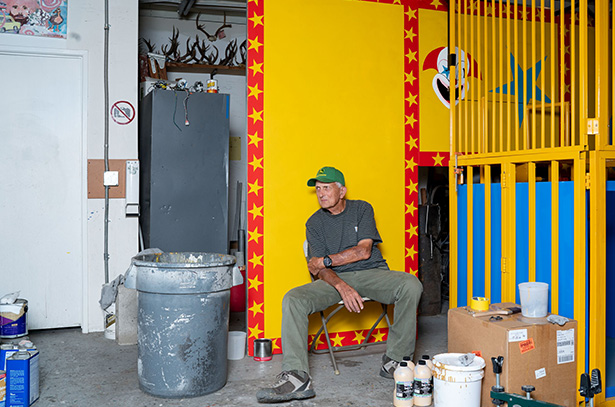
Richard Jackson
A pre-eminent figure in American contemporary art since the 1970s, Richard Jackson is influenced by both Abstract Expressionism and action painting, exploring a performative painting process which seeks to extend the potential of painting by upending its technical conventions. Born in Sacramento, California in 1939, Jackson first came to international attention with a major presentation of his installation works at the Menil Collection, Houston, in 1988, followed by the 1992 exhibition, ‘Helter Skelter,’ at the Los Angeles Museum of Contemporary Art.Jackson’s work is process-oriented, and the structural aspect of his installations involves a high level of craftsmanship and engineering. However, the final application of paint is generated through an automated process which Jackson calls ‘activation.’ He equips his ‘painting machines’ with a network of pipes and hoses which, when deployed, cause violent eruptions of paint that immerse the work and surrounding area. The finished installations remain in the aftermath of this extreme and unpredictable performative action.
Jackson responds to the high-mindedness of painterly practice by repositioning painting as an everyday experience. For Jackson, paint is not a tool used to create a representational image, but is used as a ubiquitous liquid which is spurted, splattered and sprayed over the surface of his installations.
He draws on the visual lexicon of domestic environments, universal basic human activities, and hallmarks of the quintessential American life such as hunting and sports. By harnessing this imagery and combining it with a physically laborious and conceptually rigorous artistic practice, Jackson has produced a body of work that questions and challenges the structure of the art world at large for over four decades.

Rashid Johnson
Born in Chicago in 1977, Rashid Johnson is among an influential cadre of contemporary American artists whose work employs a wide range of media to explore themes of art history, individual and shared cultural identities, personal narratives, literature, philosophy, materiality, and critical history. Johnson received a BA in Photography from Columbia College in Chicago and studied for his masters at the School of the Art Institute of Chicago. Johnson's practice quickly expanded to embrace a wide range of media—including sculpture, painting, drawing, film making, and installation—yielding a complex multidisciplinary practice that incorporates diverse materials rich with symbolism and personal history. Johnsons work is known for its narrative embedding of a pointed range of everyday materials and objects, often associated with his childhood and frequently referencing aspects of history and cultural identity. Many of Johnson’s more recent works delve into existential themes such as personal and collective anxiety, interiority, and liminal space.
Recent solo exhibitions include: ‘Seven Rooms and a Garden. Rashid Johnson + Moderna Museet’, Moderna Museet, Stockholm, Sweden, 2023; ‘Rashid Johnson. Nudiustertian’, Hauser & Wirth, Hong Kong, 2023; ‘The Chorus’, The Metropolitan Opera, New York NY, 2021; ‘Summer Projects. Rashid Johnson’, Creative Time, New York, NY, 2021; ‘Rashid Johnson. Capsule’, National Gallery of Canada, Ottawa, Canada, 2021; ‘The Crisis’, Storm King Art Center, New Windsor NY; ‘Rashid Johnson. Waves’, Hauser & Wirth, London, UK, 2020; the touring exhibition ‘Rashid Johnson. The Hikers’ at the Aspen Art Museum, Aspen CO, the Museo Tamayo, Mexico City, Mexico and at Hauser & Wirth, New York, 2019; ‘Provocations. Rashid Johnson’, Institute for Contemporary Art, Richmond VA, 2018; ‘Rashid Johnson. No More Water’ at Lismore Castle Arts, Lismore, Ireland, 2018 and ‘Rashid Johnson. Hail We Now Sing Joy’ at The Kemper Museum of Contemporary Art, Kansas City MO which traveled to the Milwaukee Art Museum, Milwaukee WI, 2017.
Inquire about available works in ‘GRUPPENAUSSTELLUNG’
‘GRUPPENAUSSTELLUNG’ is on view through 1 January 2024 at Hauser & Wirth Somerset.
Related Content
Current Exhibitions
1 / 11
